Strolling around Yangon’s downtown busy streets it’s not hard to miss the evidence of 19th century British Burma. Standing between modern city buildings is an open air museum of old British Colonial architecture, the largest collection in South East Asia. Hidden behind the grandeur of majestic European design mixed with Asian influences are mysteries from a forgotten era when Yangon (Rangoon) was once the most cosmopolitan city in South East Asia. Since then, a once grandeur collection of hotels, banks and government buildings have either been restored or fallen victim to neglect. Thankfully the Burmese government has instated the “Yangon City Heritage List” which protects and forbids the demolition of all buildings including temples and pagodas older than 50 years without government approval. So I think with time and money we will see more of the neglected buildings restored to their former glory.
The best way to marvel at Yangon’s colonial treasures is to set aside a morning (2 to 4 hours) and take yourself on a self guided walking tour. Lonely Planet’s Myanmar guide has a detailed self guided walk, including a good map showing the route to follow. Our guesthouse Motherland Inn 2 offered a free guided tour but we decided to use our LP guide and do it ourselves so we can go at our own pace.
We started the walk early in the morning while it was still cool (the best time to do it). Our route from our guesthouse to the starting point of the tour passes one of the points of interest so we stopped here first. The Ministers Office, an impressive large red brick building built in the 1800’s and set back in a park behind a fence was formerly the Secretariat and was the nucleus of British power.
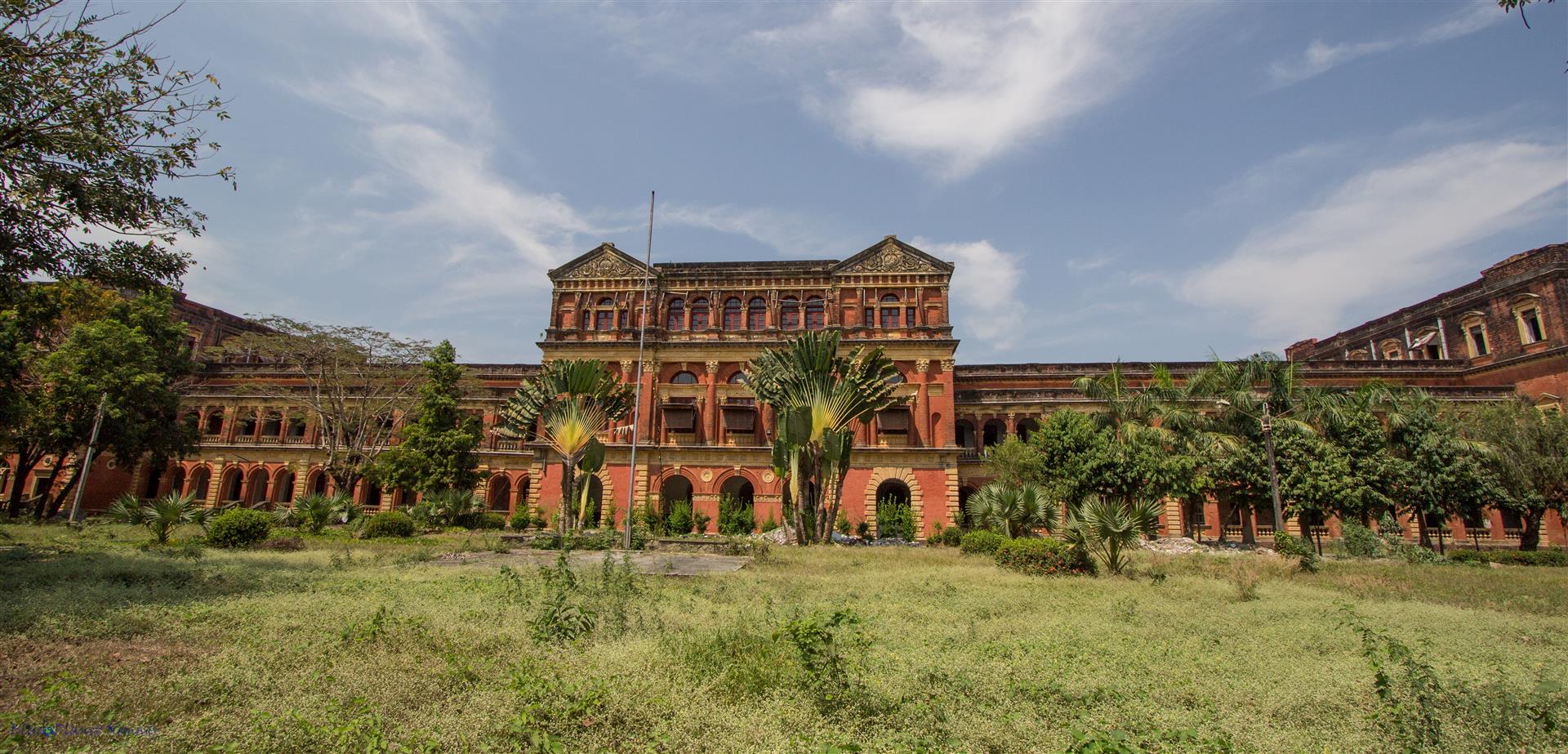
For an early Monday morning it was fairly busy, locals were out and about heading to work or going about other daily business. The walk was an opportunity to capture life in Yangon in general. There was plenty of other architecture to marvel at that wasn’t listed in the tour as well as interesting street scenes and people in general.
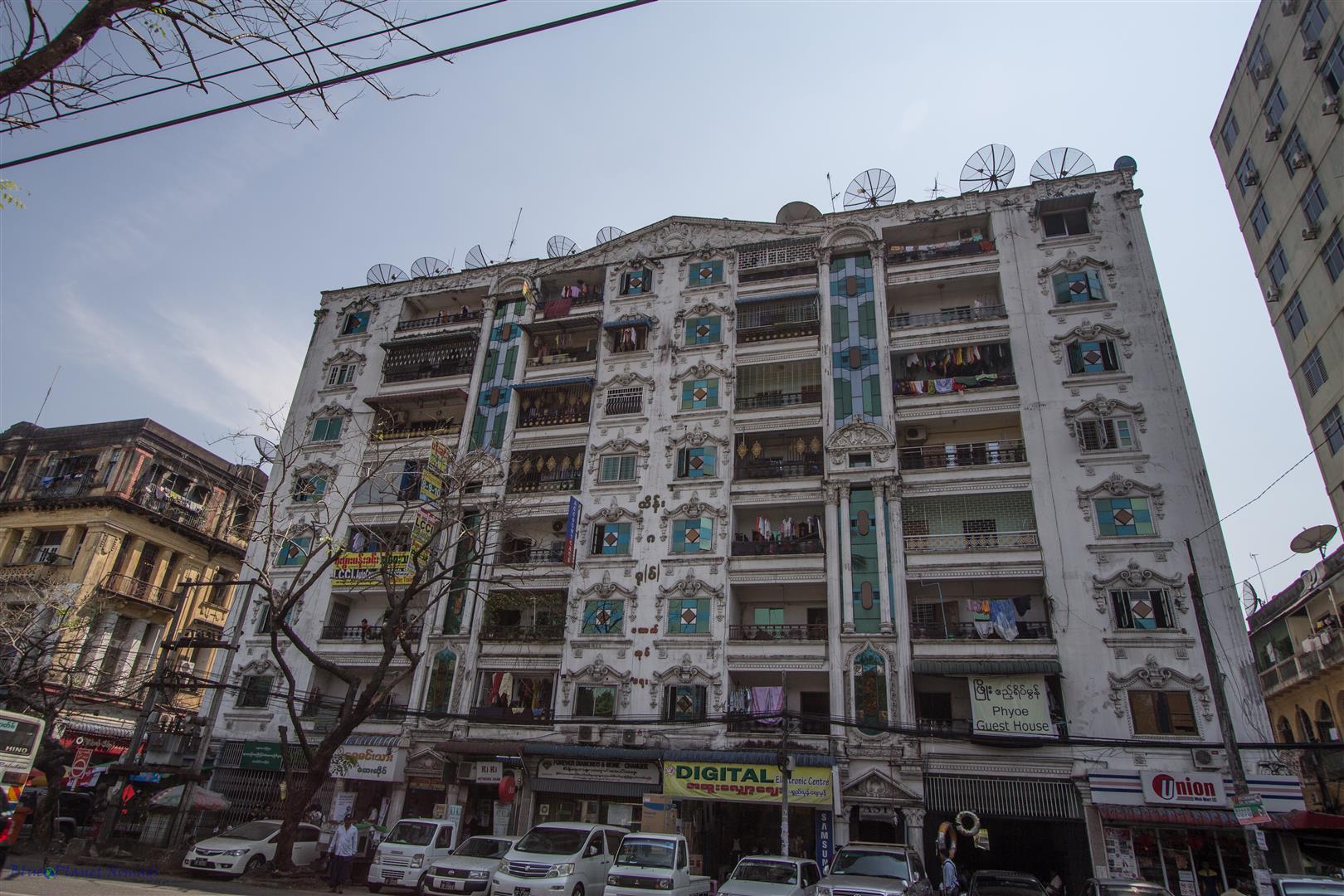
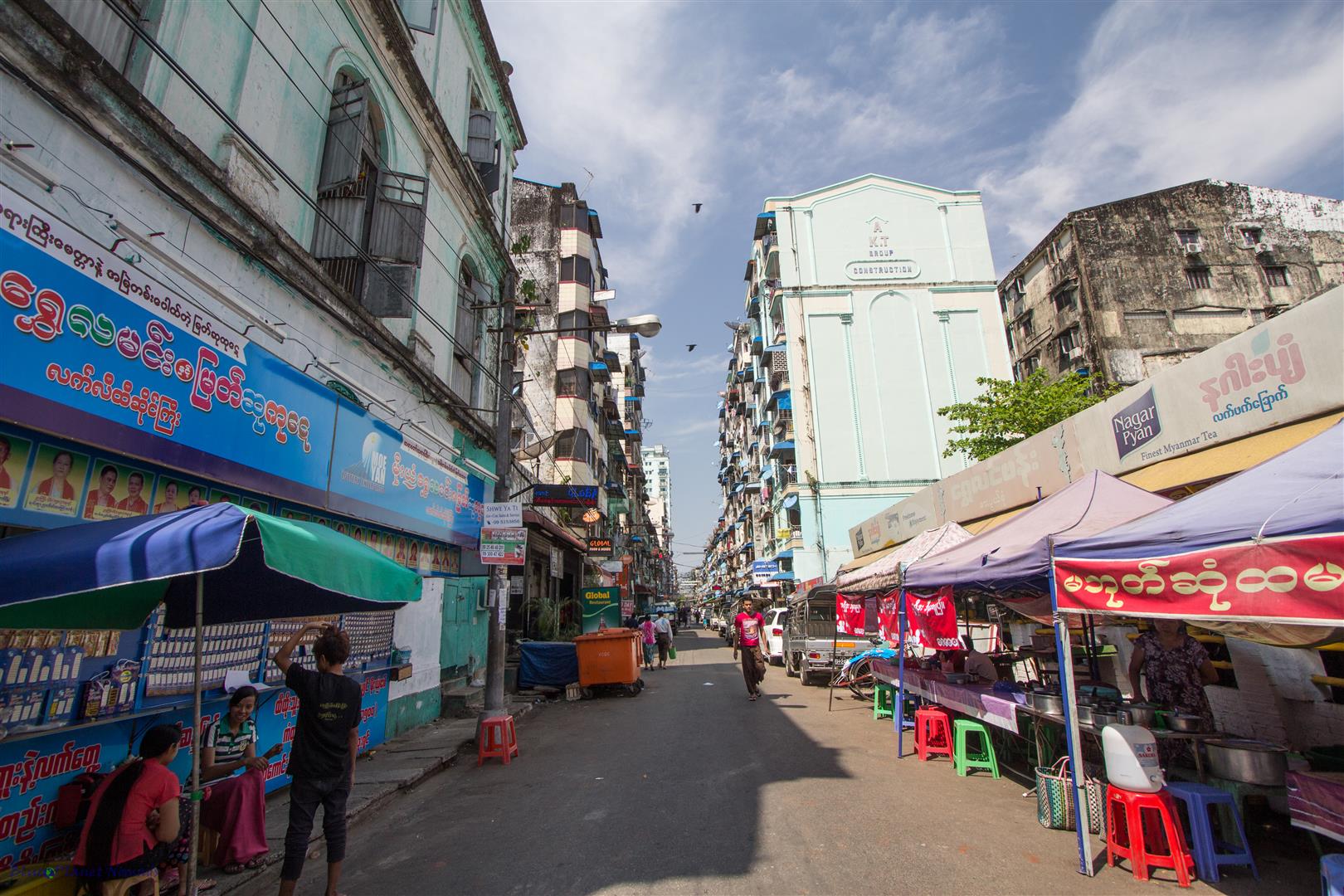
Thone Pan Hla, a Burmese Tea House near Sule Paya, the geographic heart of the city, is the LP official start to the walk, except when we got there we couldn’t find it! We could only guess that it had closed down, not that it mattered, Yangon has no shortage of tea houses 🙂 .
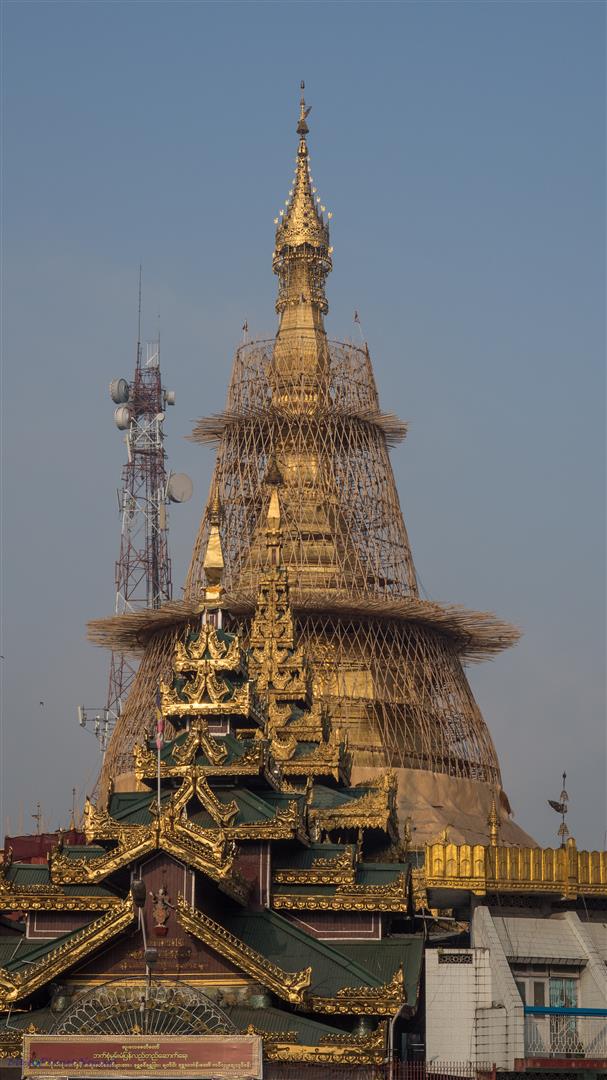
Close to the Paya and flanking Mahabandoola Gardens is a cluster of buildings to observe all within metres of each other. We started with the City Hall, the seat of the city’s administration body. The colossal building is an example of the syncretic Burmese style with its tiered roof and traditional decorations such as peacocks and nagas.
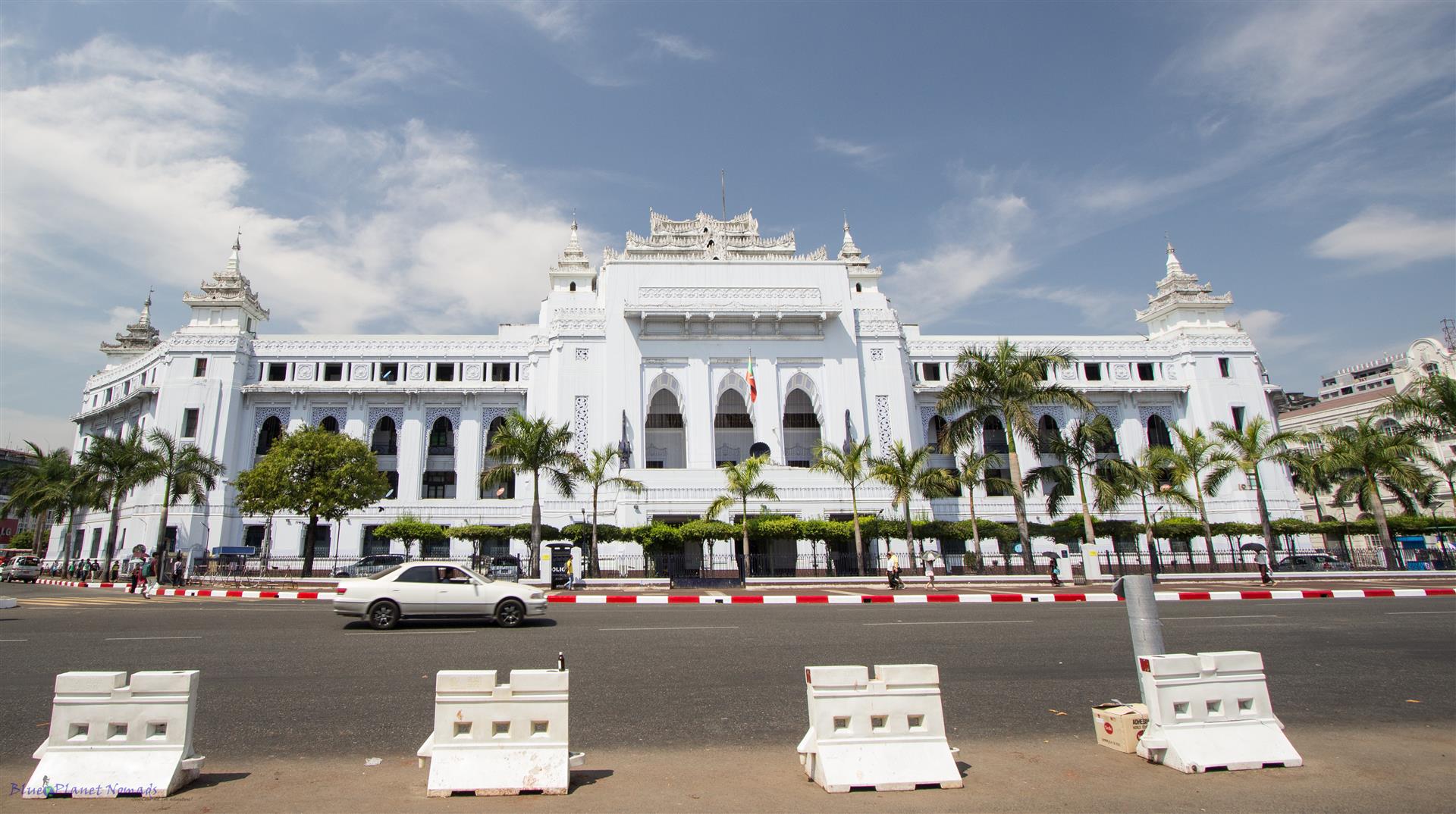
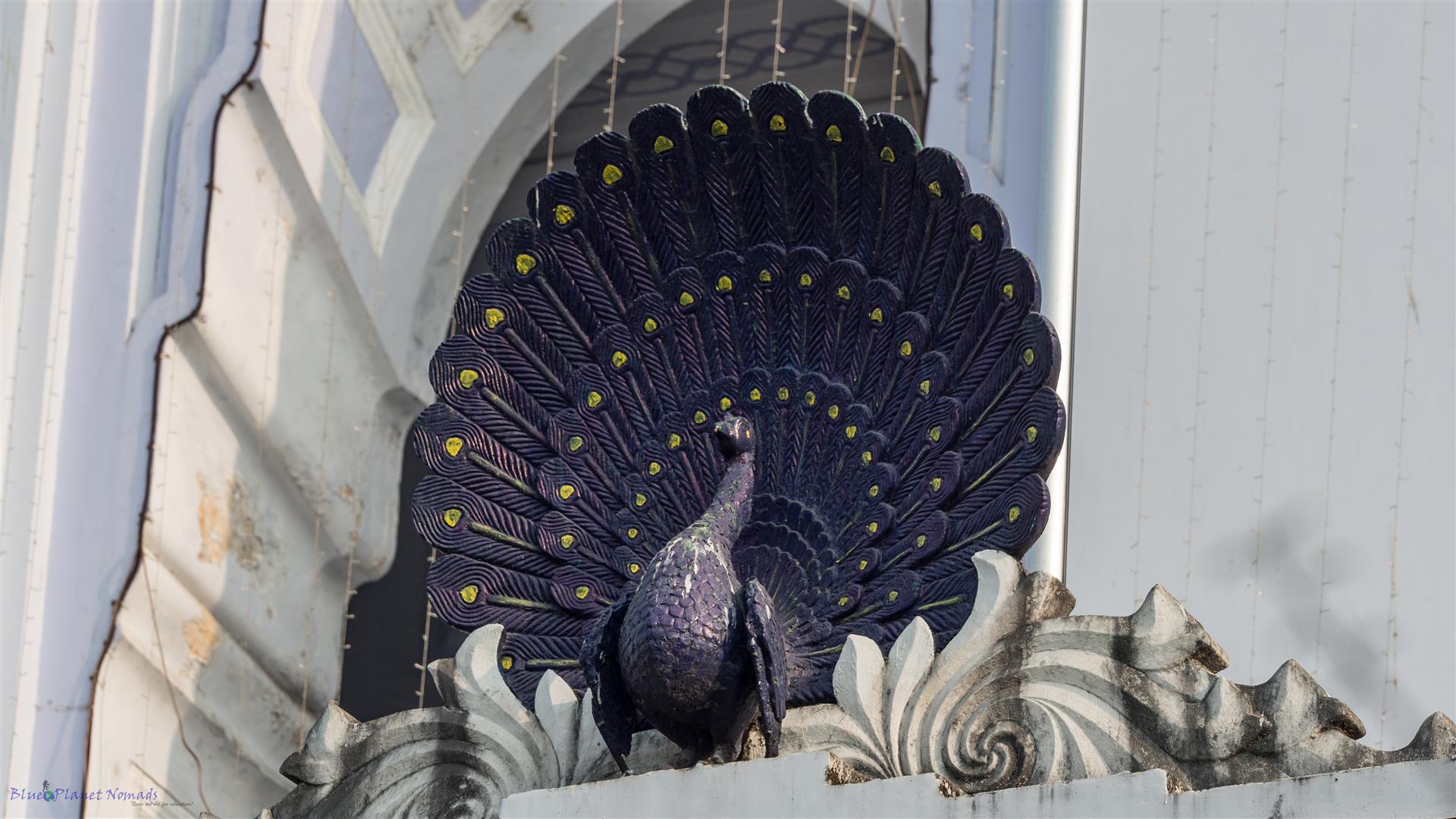
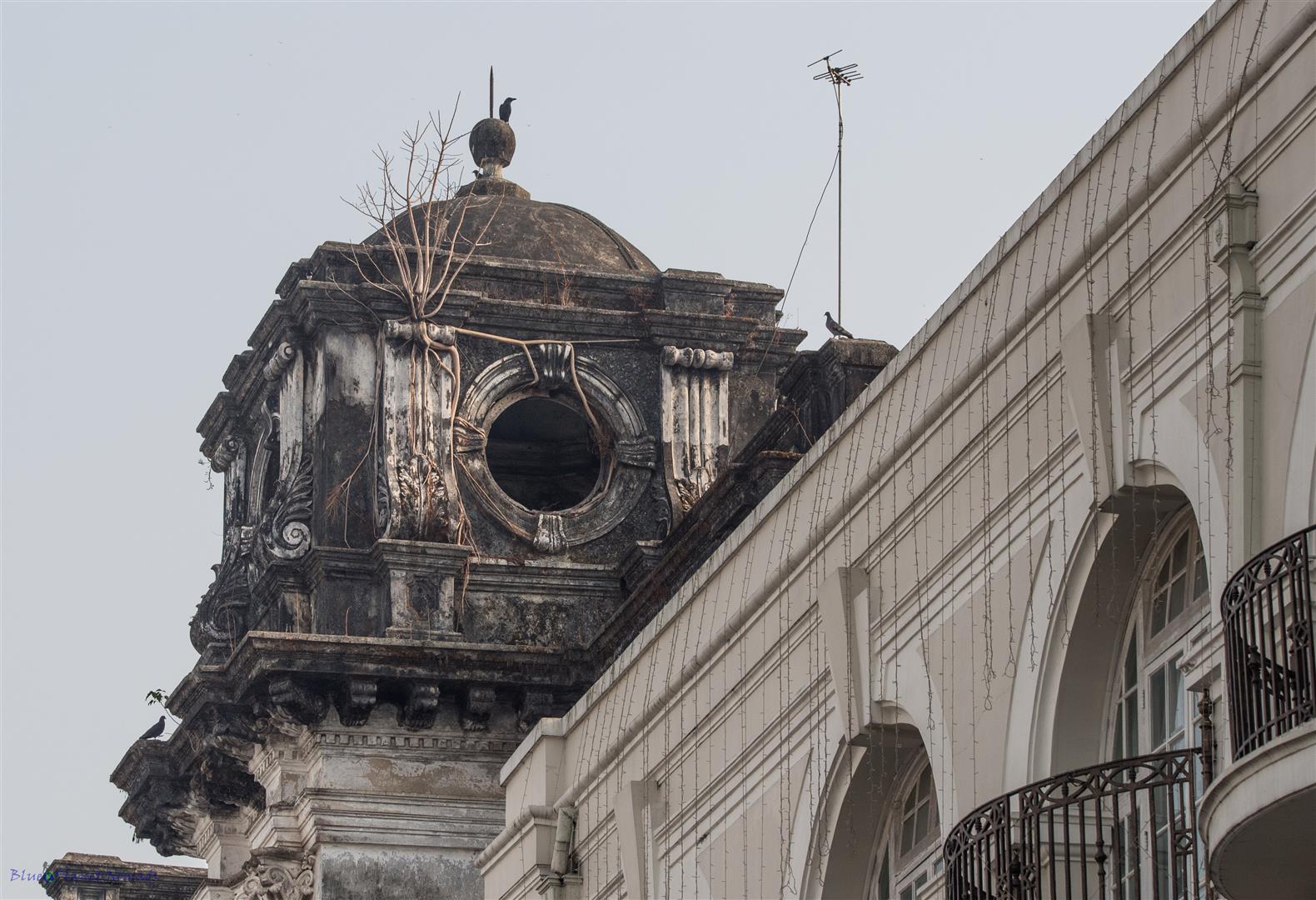
A few metres along standing on a corner is the former Immigration Department, once Row & Co department store and has been restored to become a bank.
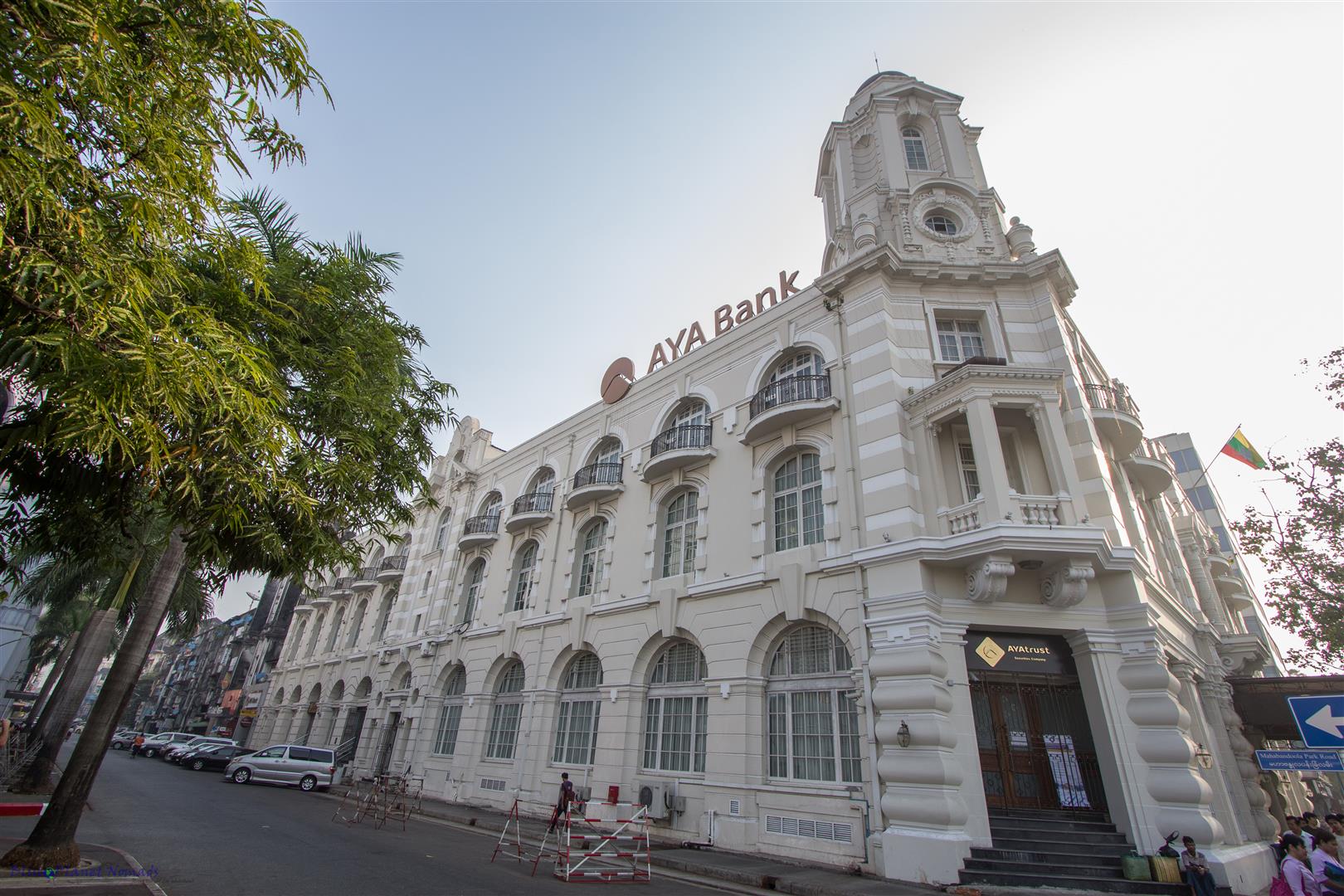
Across the street from the bank is Immanuel Baptist Church, originally built in 1885 by an American missionary. The church was rebuilt in 1952 after being destroyed in WWII.
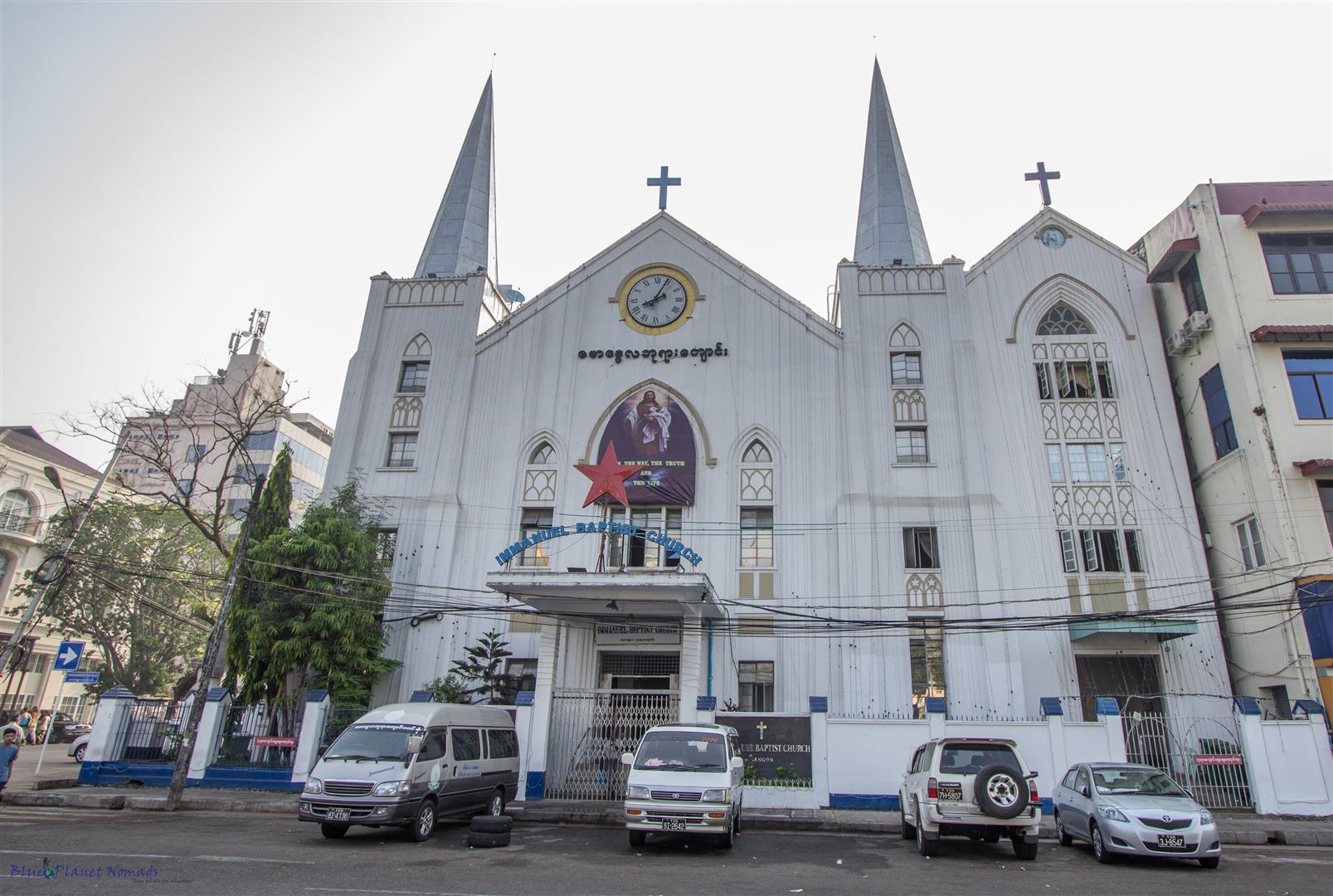
A little further along is the High Court. The lovely red and cream brick building with its impressive bell clock tower is an example of Queen Anne style architecture. The building was undergoing some renovation but not to western safety standards! We watched some of the workmen balancing themselves on the bamboo scaffolding, no shoes, no helmets and no safety harness!
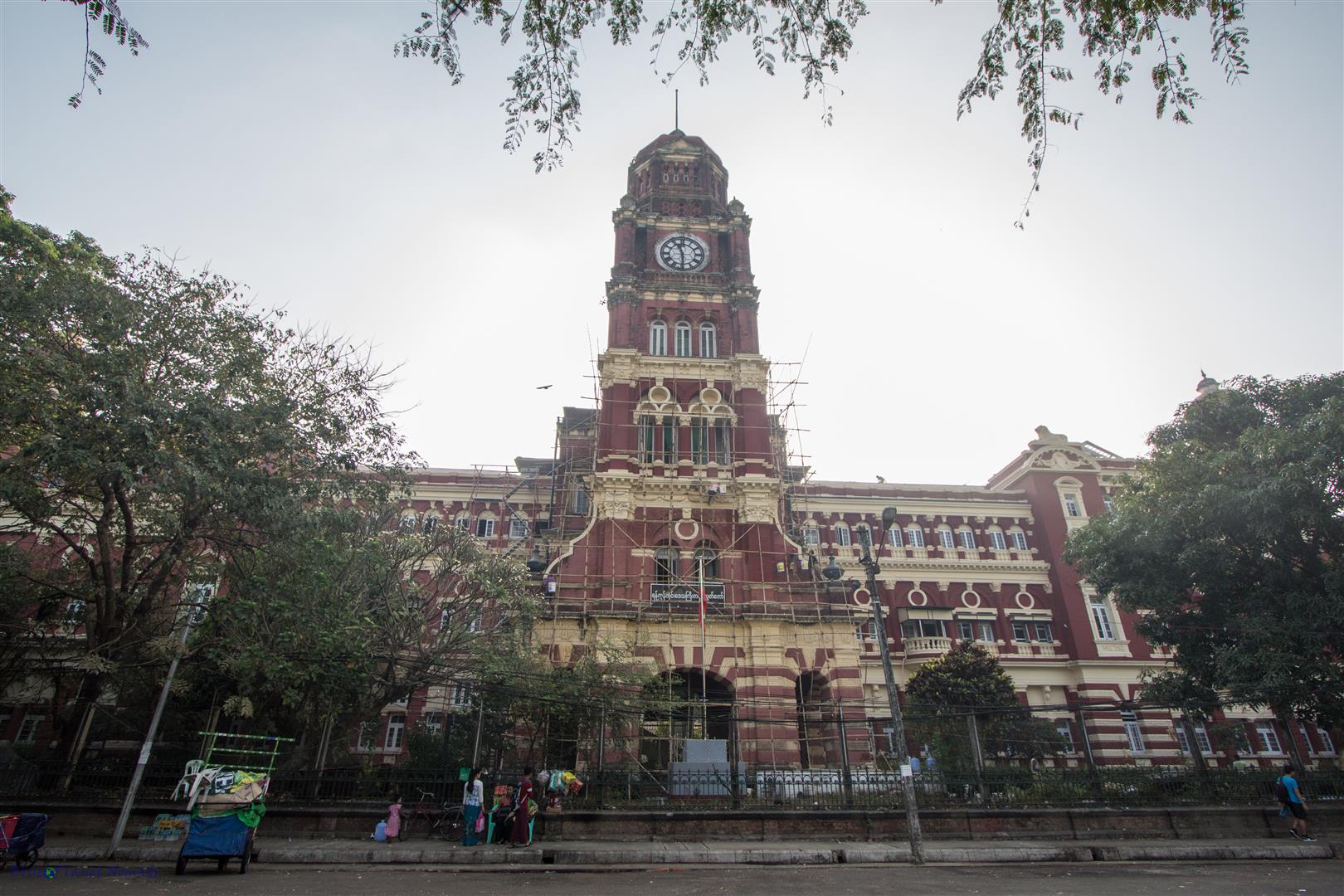
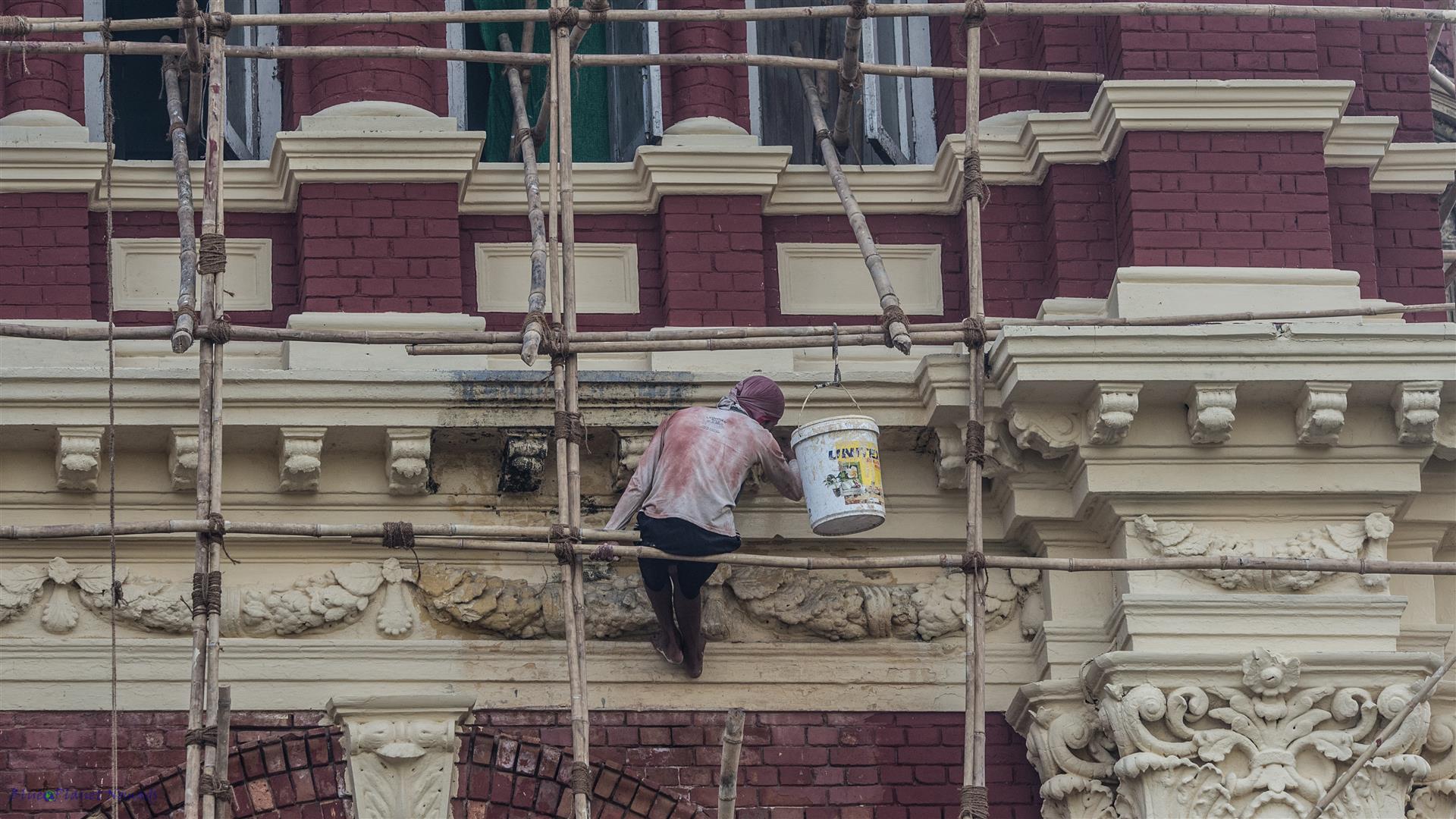
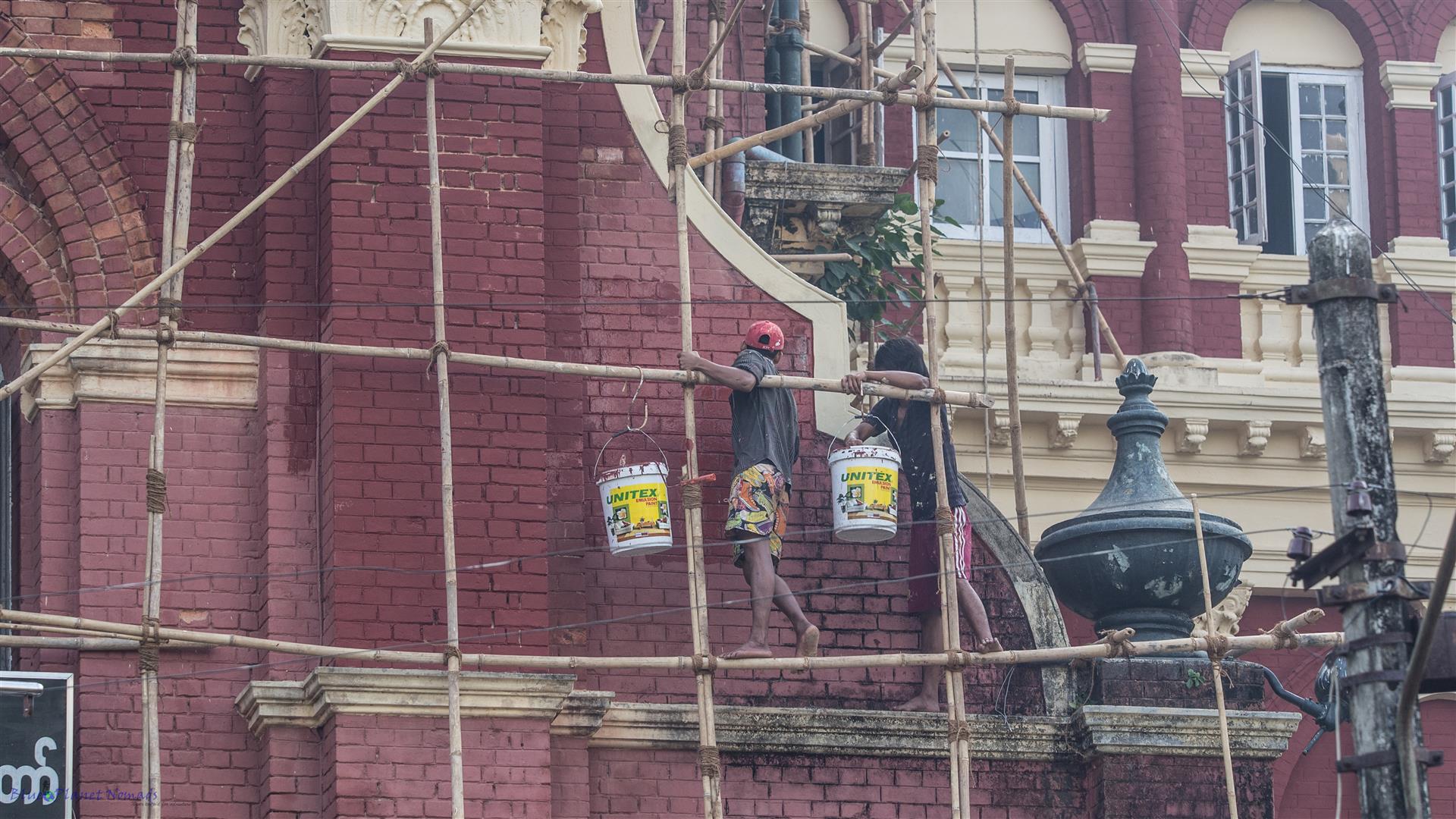
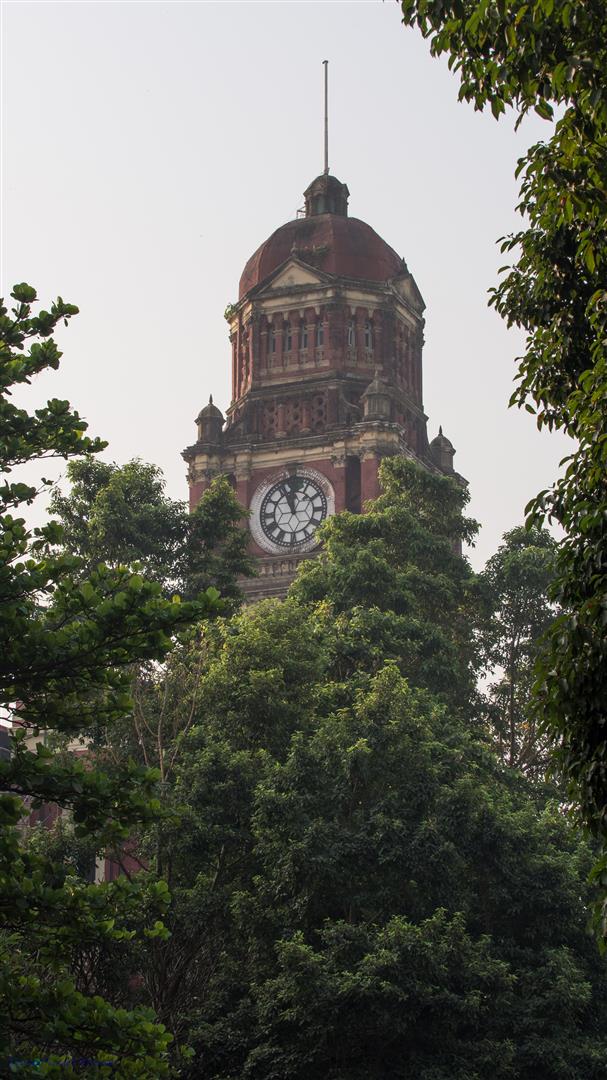
And there is always the humorous street signs, some of the best can be seen in Asia like the “no spitting” sign we spotted at the base of the High Court building. Chewing the red betel nut is a favourite amongst the locals but doesn’t always produce nice results when trying to rid of it!
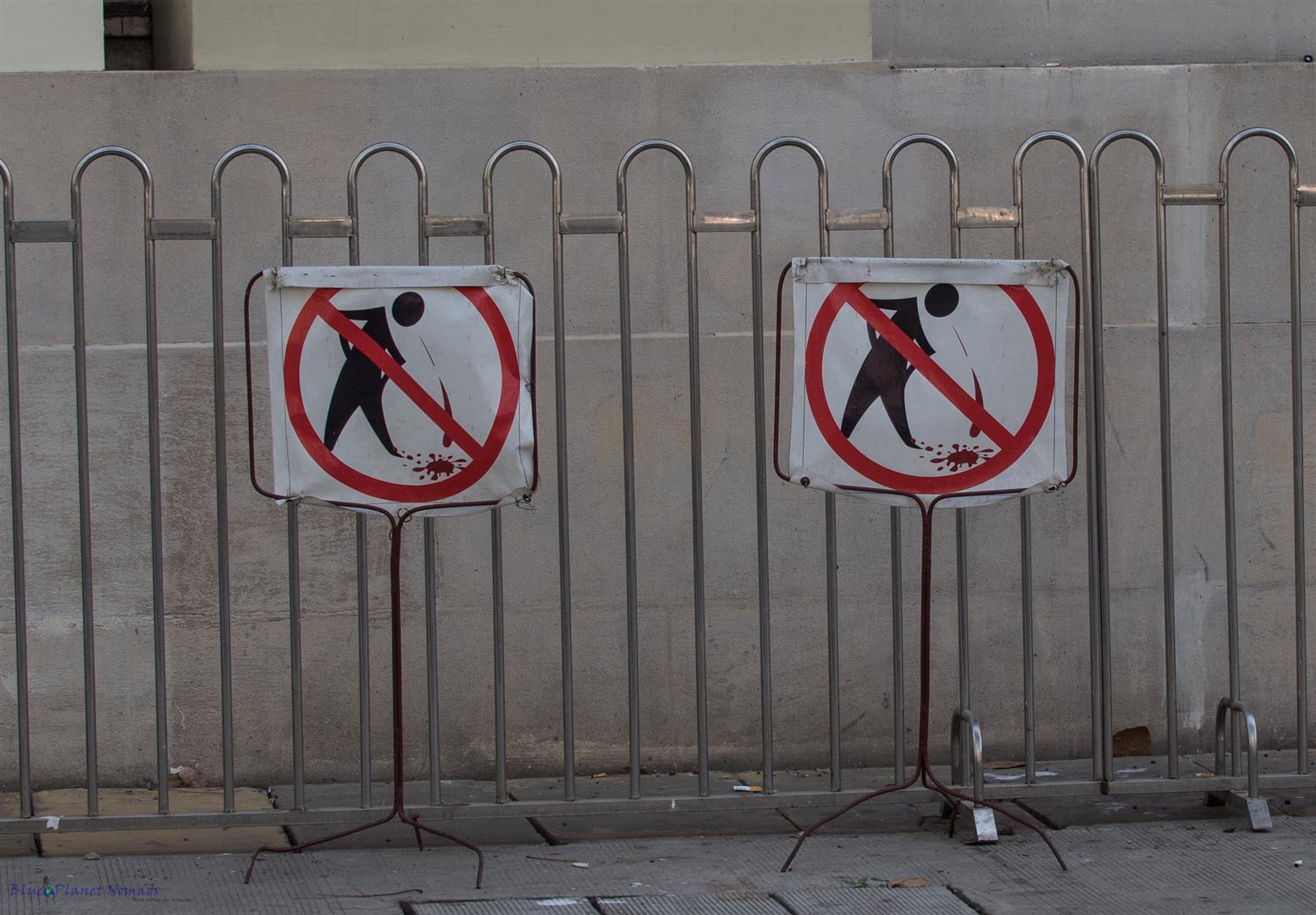
The Mahabandoola Gardens is a lovely green space to escape the hustle and bustle of the streets. It’s a great place to observe locals and people watch in general. After taking a look at the parks centrepiece – The Independence Monument, we crossed the park to exit the other gate, a 200 metre walk then brought you to the Myawaddy Bank on the corner of a very busy Strand Road.
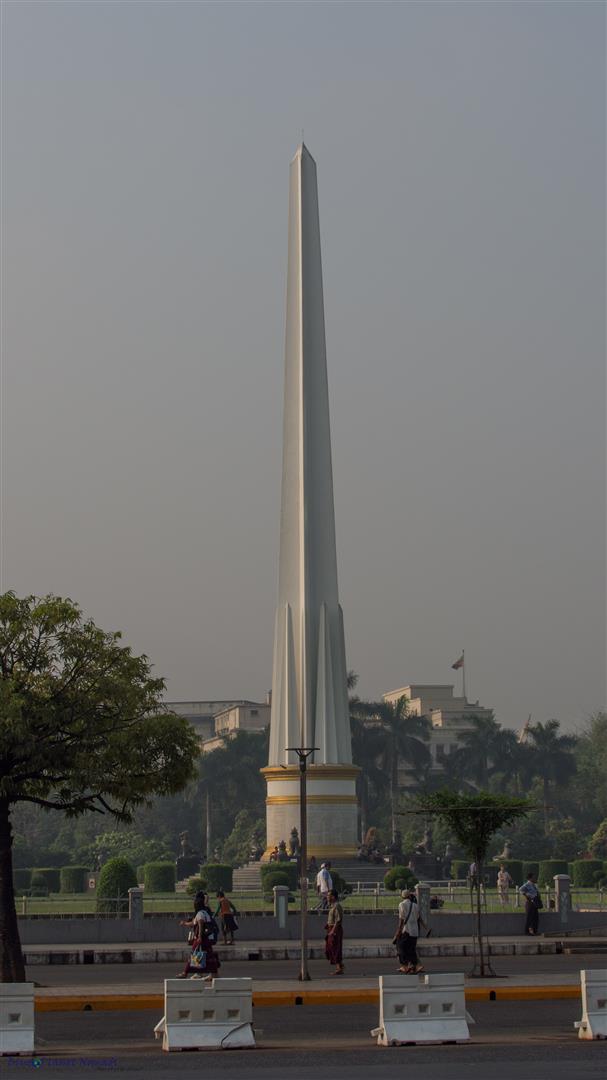
The bank was impossible to photograph and we were certainly not game enough to try cross the manic highway! There was no path so we had to practically hug the wall of the building to avoid being run over! The bank was big so there was a lot of wall to hug until we reached the safety of a side walk a few meters on.
Next door to the bank is the colossal former Yangon Region Office Complex which now lays abandoned, although there is discussion to turn the building into a 5* hotel. Conservationists would argue that this is not a good idea for fear that the building would be destroyed and history lost so there is an ongoing argument over what to do with it.
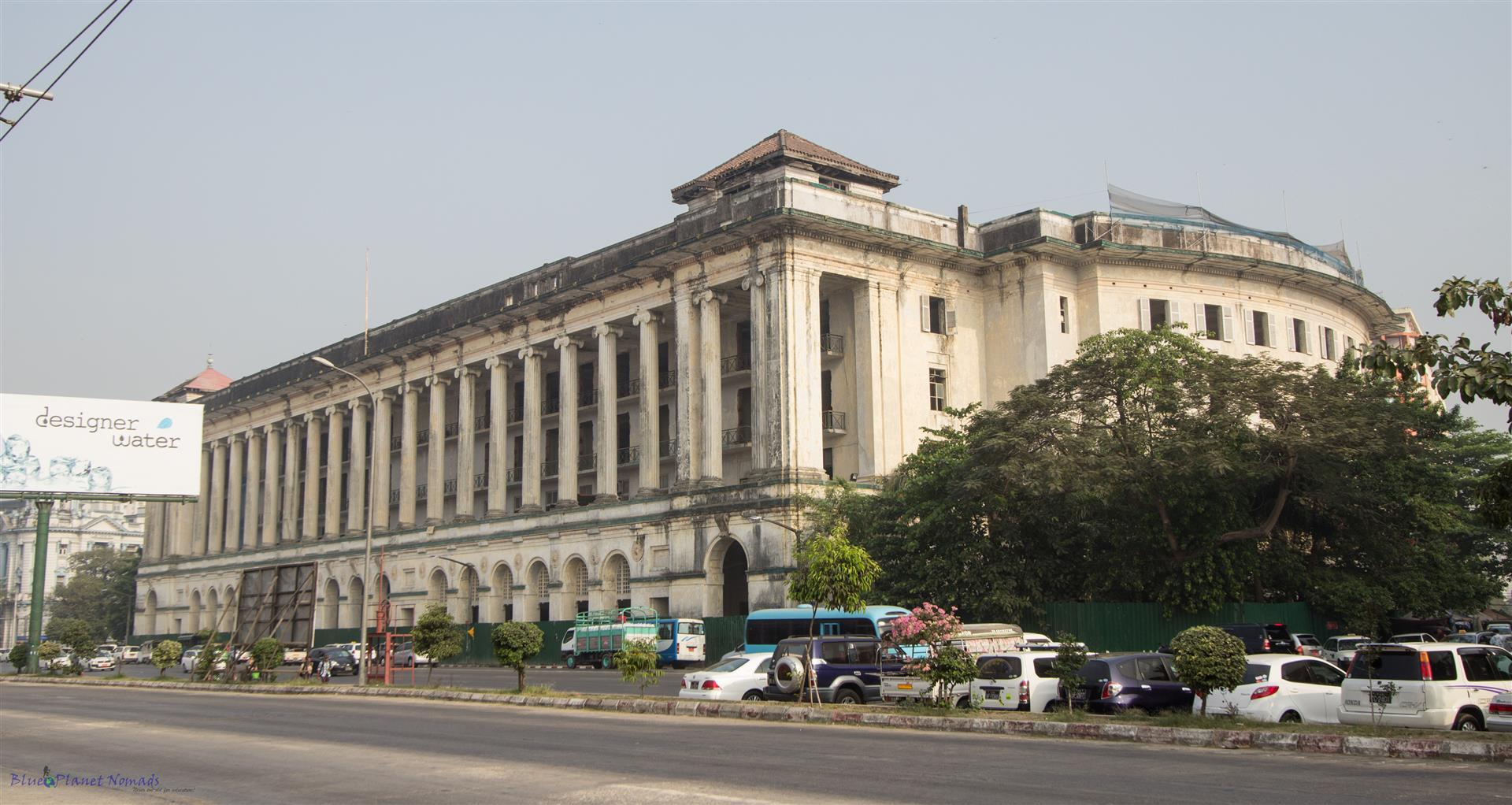
Further along the strand is the 100 year old red brick Customs House with its white tower and hanging clock. The Customs House is one of the few buildings still functioning for its original purpose. Next door is the more dilapidated Yangon Region Court, a pastel character building dating back to 1900 and one of the oldest masonry structures in Yangon. It was obvious it needed repair but I just loved the weathered character.
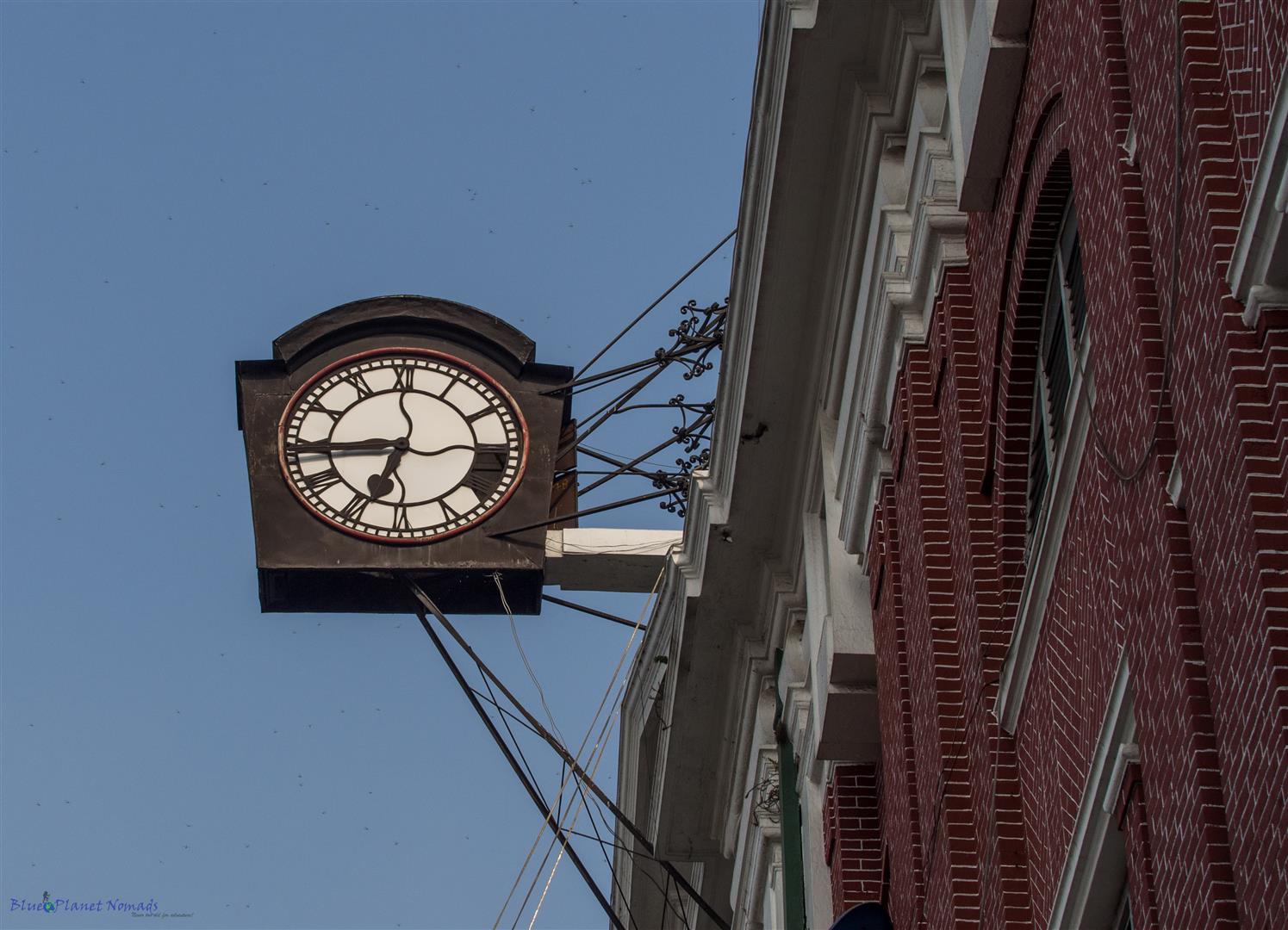
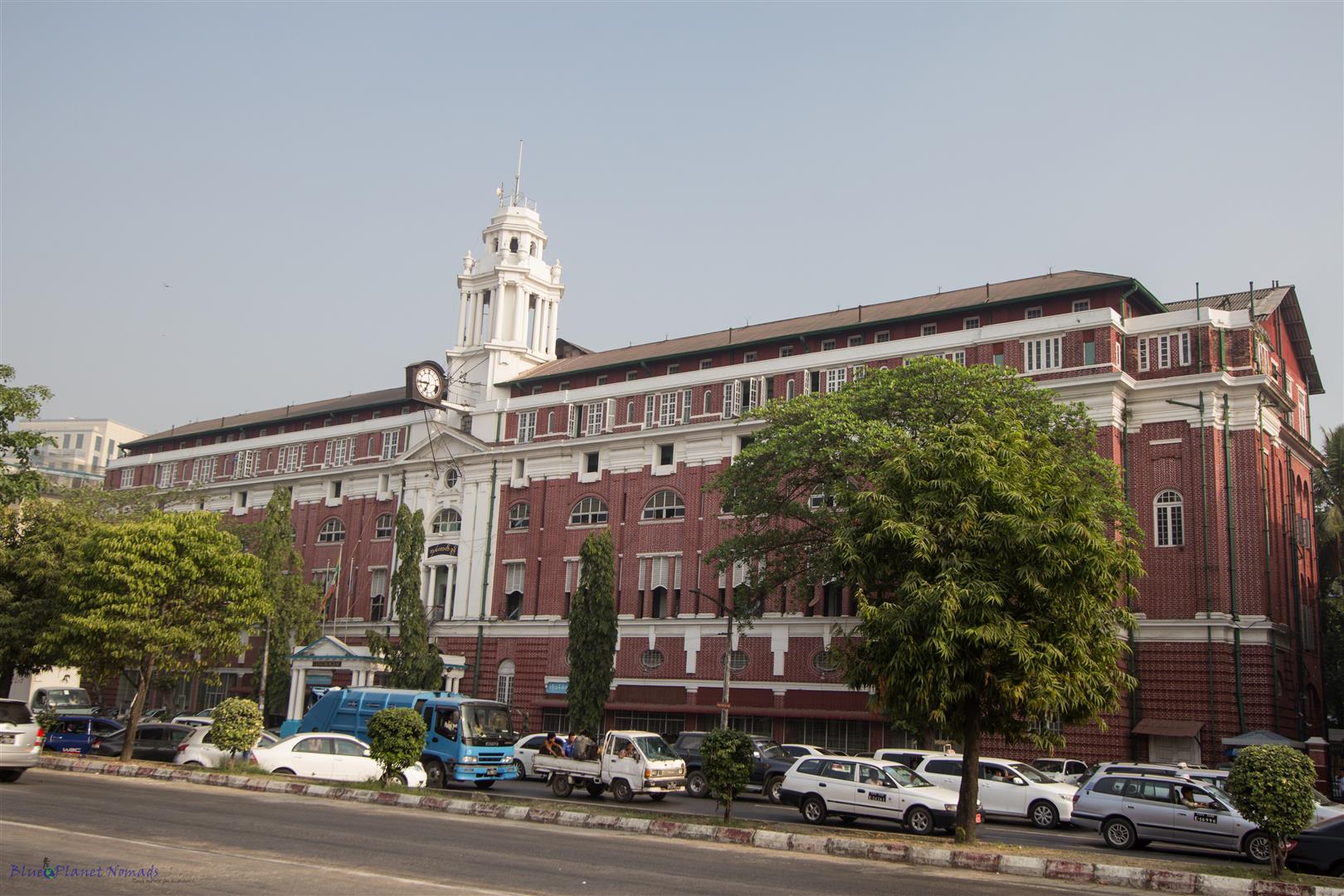
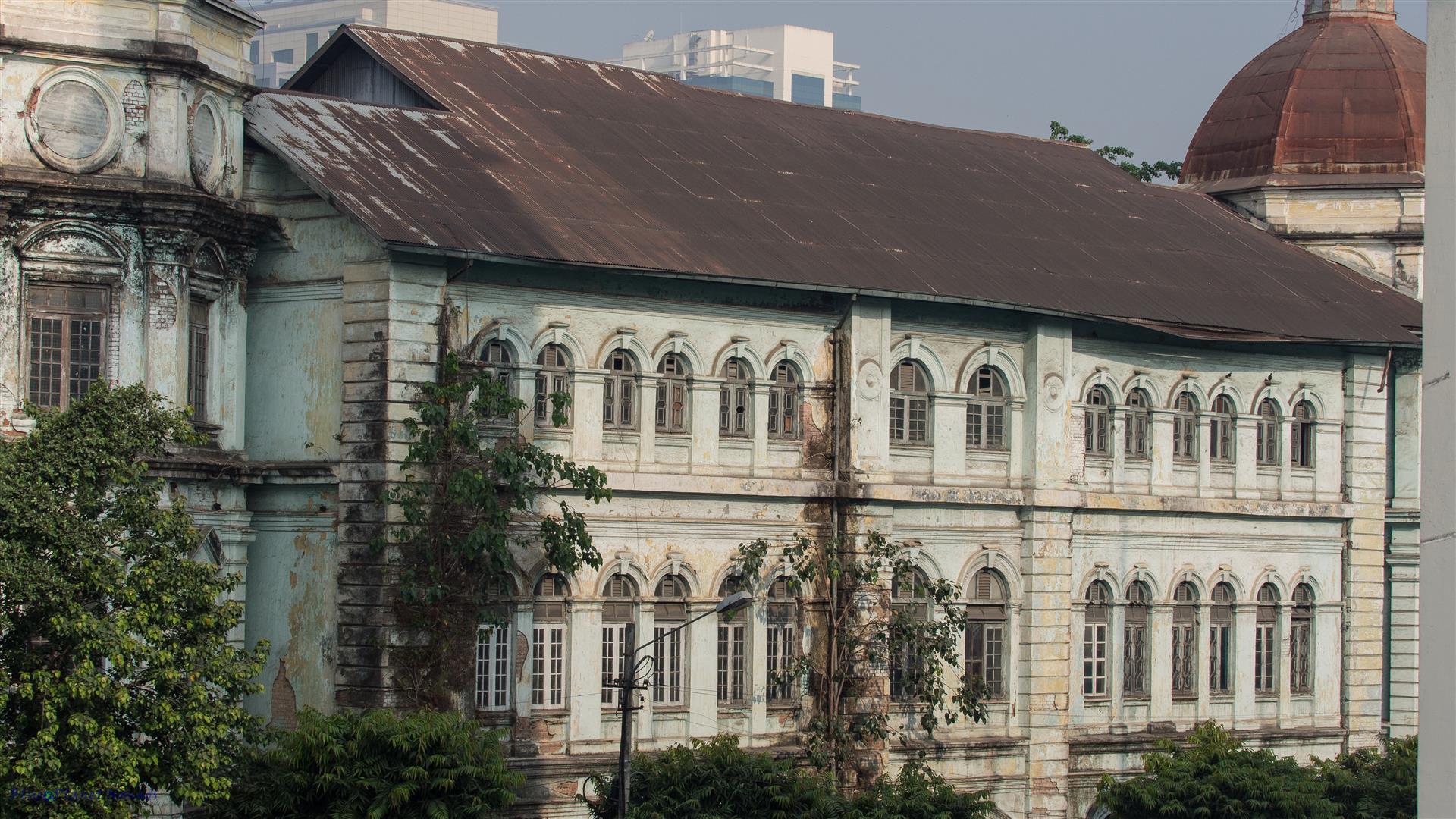
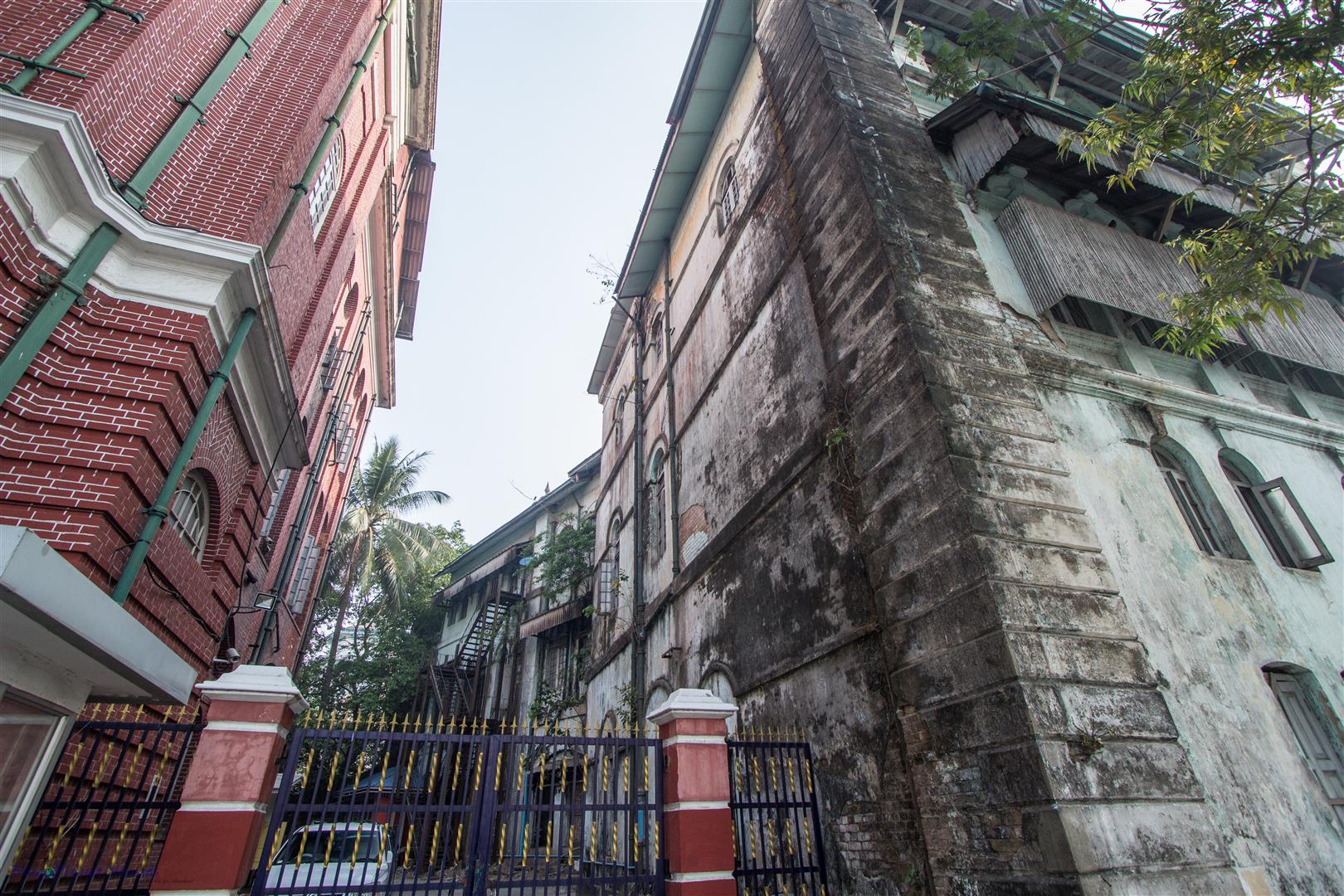
A few meters further on was a foot bridge that enabled us to get to the other side of the road safely to photograph all the buildings. From the top of the footbridge we were able to capture the best photos of both the Region Court and Customs House. Going down the escalator the other side of the bridge we were met by a wall of people traffic, they had just got off the ferry on the river. Our return trip across the bridge wasn’t quite so hectic.
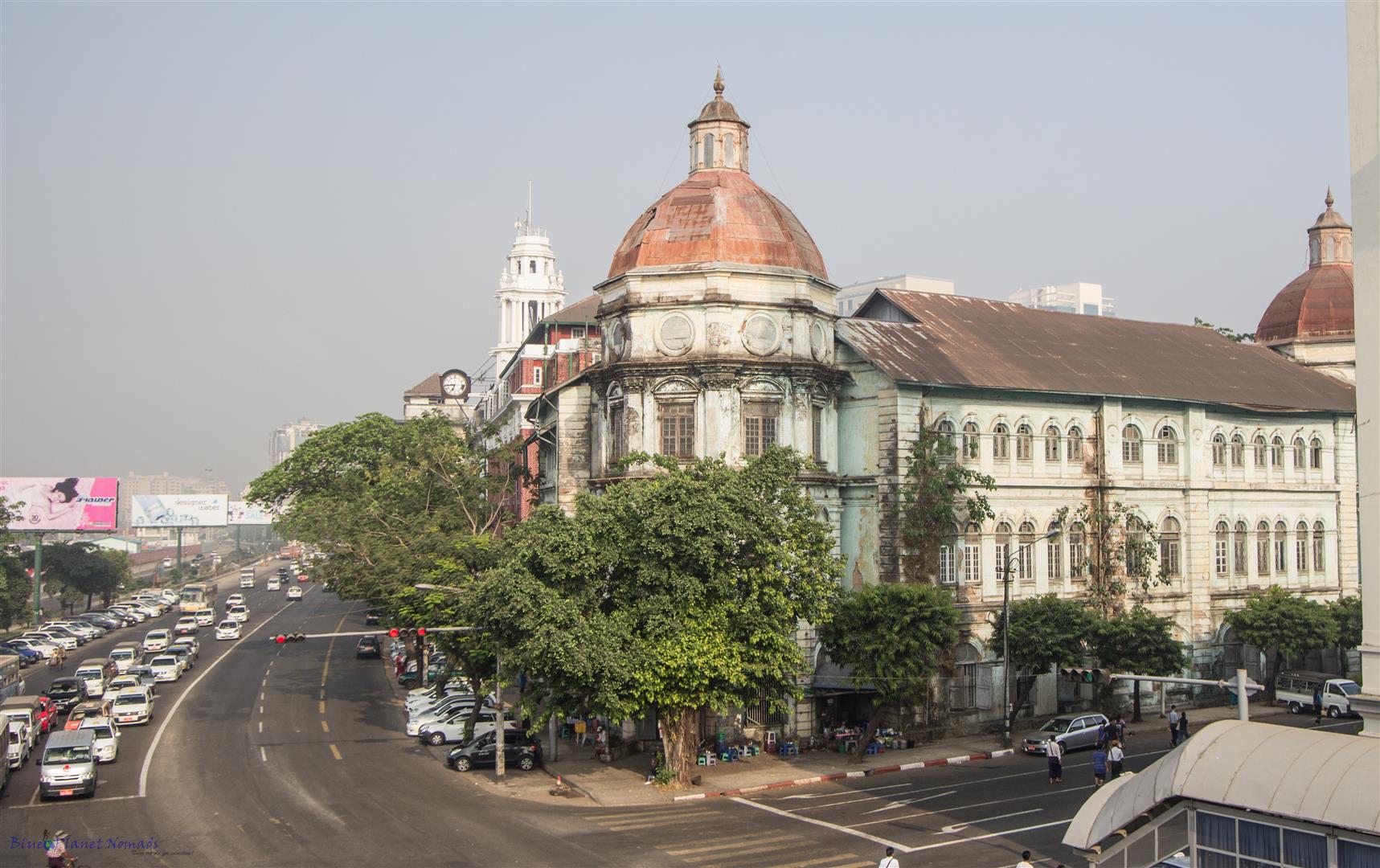
On the opposite corner to the Region Court is the restored Port Authority building with its striking square corner tower and bas-relief sculptures of ships on the facade.
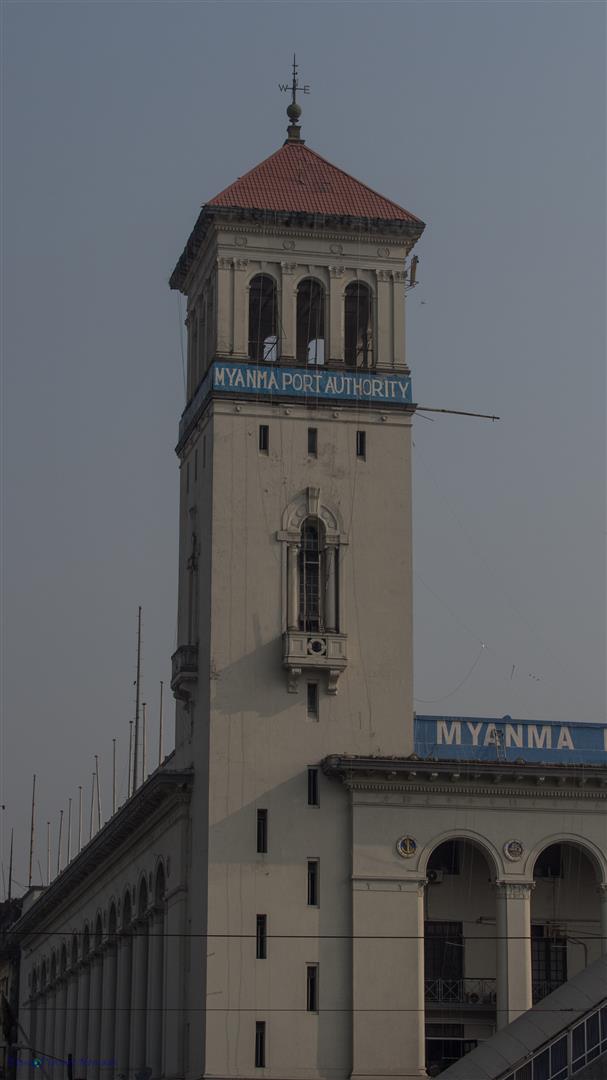
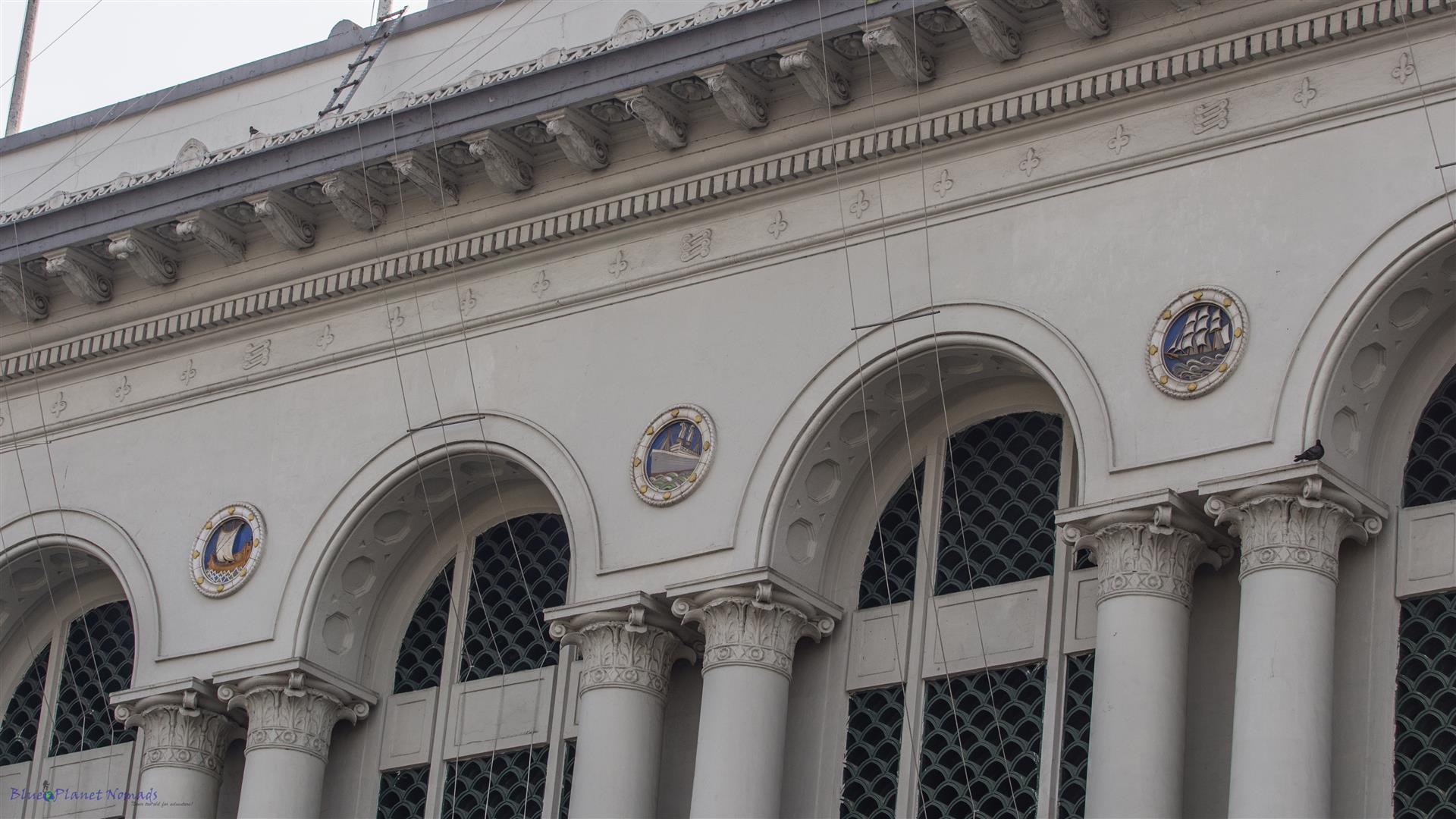
We had been walking for a couple of hours and the days heat started to ramp up and we were in need of a cold drink and some air conditioning and one of Yangon’s best restored colonial buildings – The Strand Hotel was able to solve both those problems. Inside was every bit the colonial charm with its wicker furniture and hanging ceiling fans. We enjoyed every bit the cool refreshing drinks, cold air con and free Wi-Fi. What we didn’t enjoy was the 14,000 kyat ($14) drinks bill at the end of it and that was for just a couple of soft drinks! Still it was a nice treat to have a drink in one of Myanmar’s most luxurious and expensive hotels 🙂
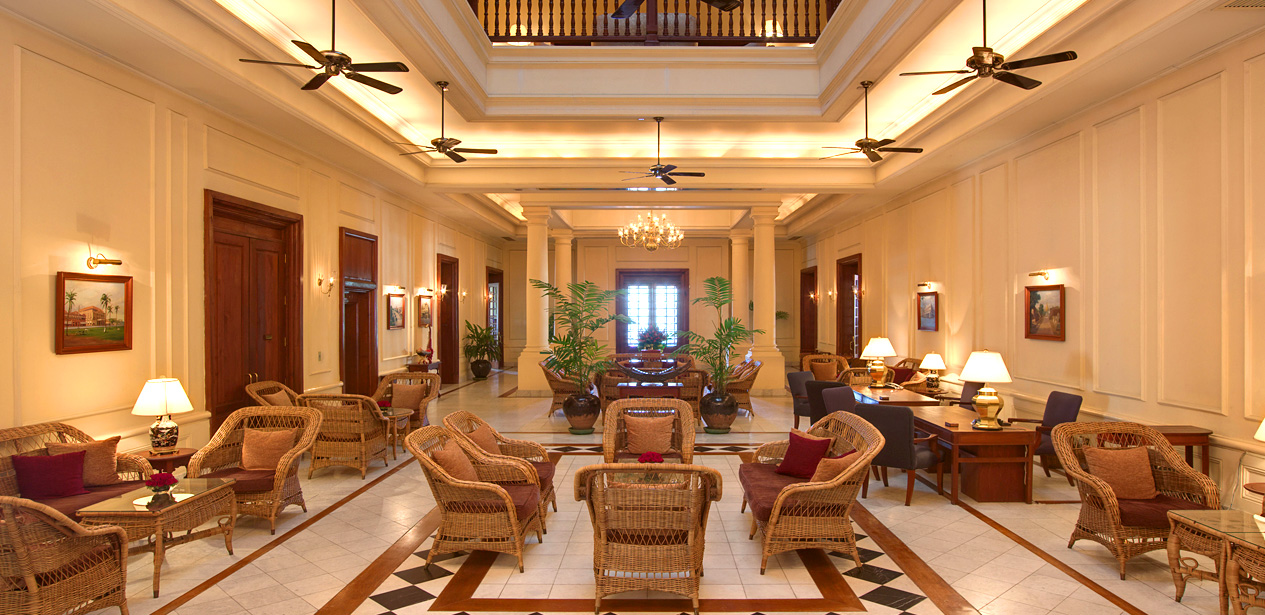
Back in the heat we continued on with our tour and checked out the Central Post Office dating back to 1908.
We back tracked to take a right turn off the Strand on to Lower Pansodan Street to pass the Myanmar Agriculture Development Bank which is not the prettiest building in my opinion. Its white columned facade and green pattered window surrounds are very art decor. Next door is the Inland Waterways Department and the Lokanat Gallery Building which is in serious need of TLC (Tender Loving Care).
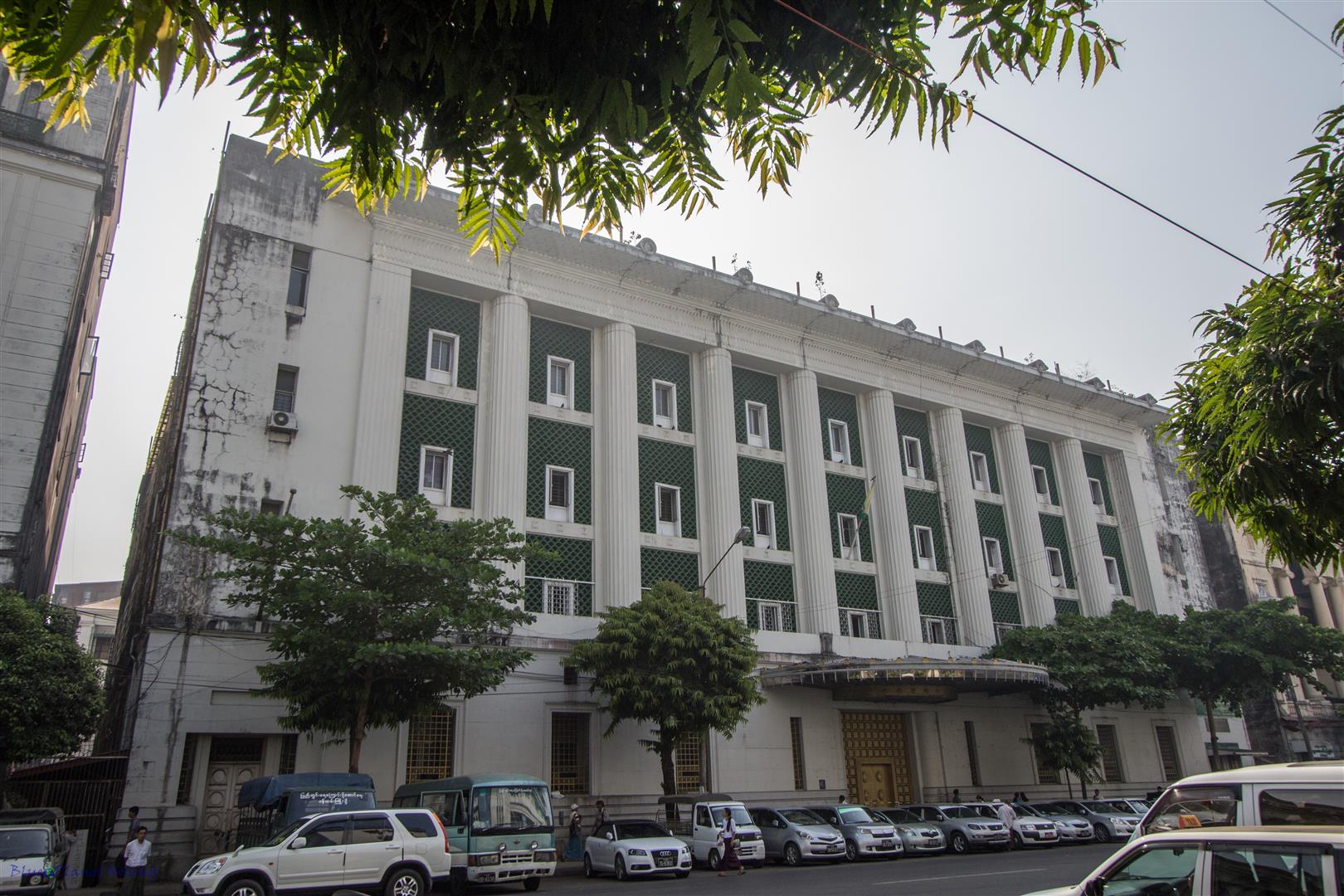
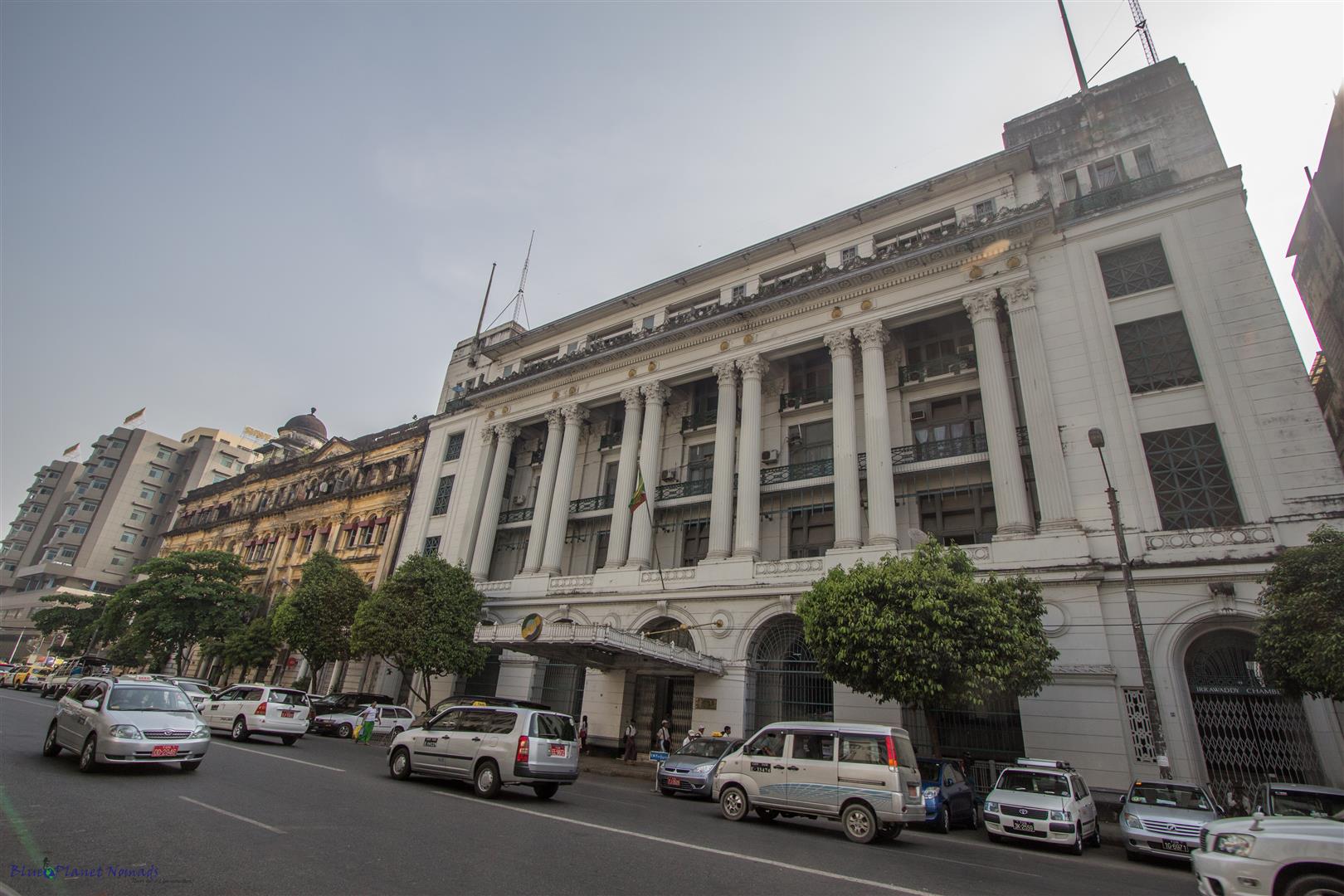
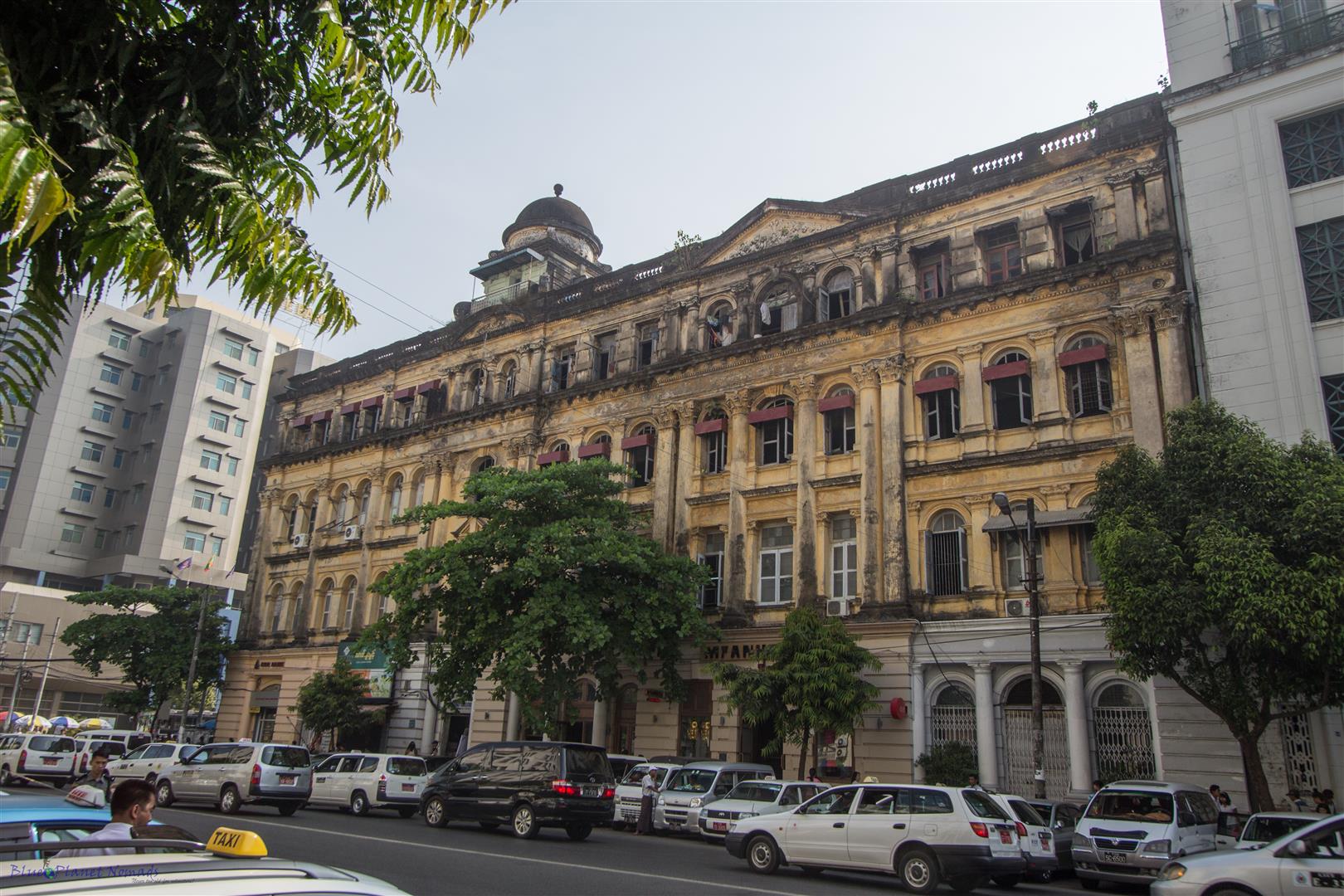
The much narrower 37th Street was awash with interest like the roadside book stalls and some seriously decaying architecture.
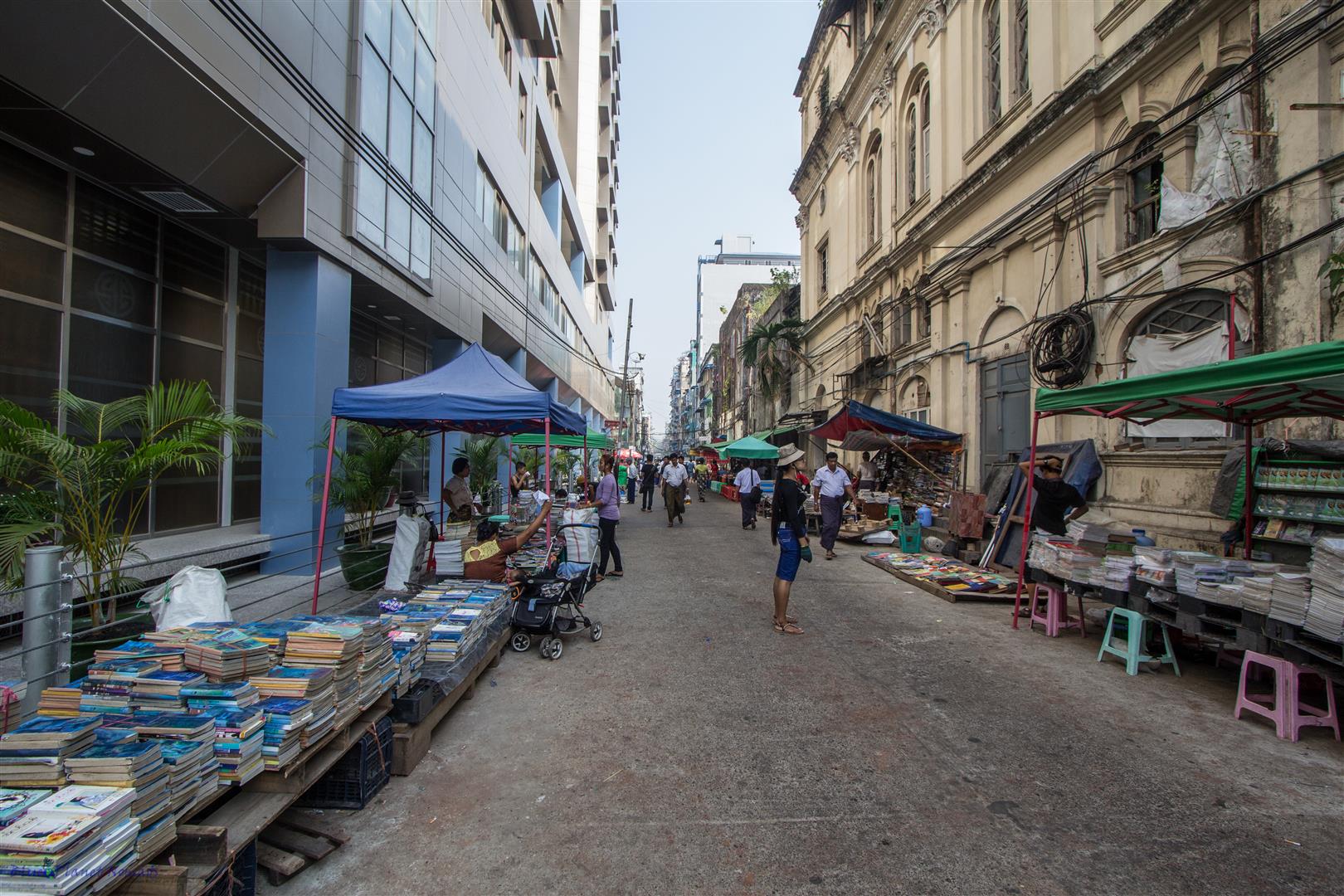
Among the facades of ingrained grime, crumbling stone and plant growth is a building that tells a story. Windows and doors are some of our favourite to photograph and there were no shortage of character in these buildings if you can see past the ugliness.
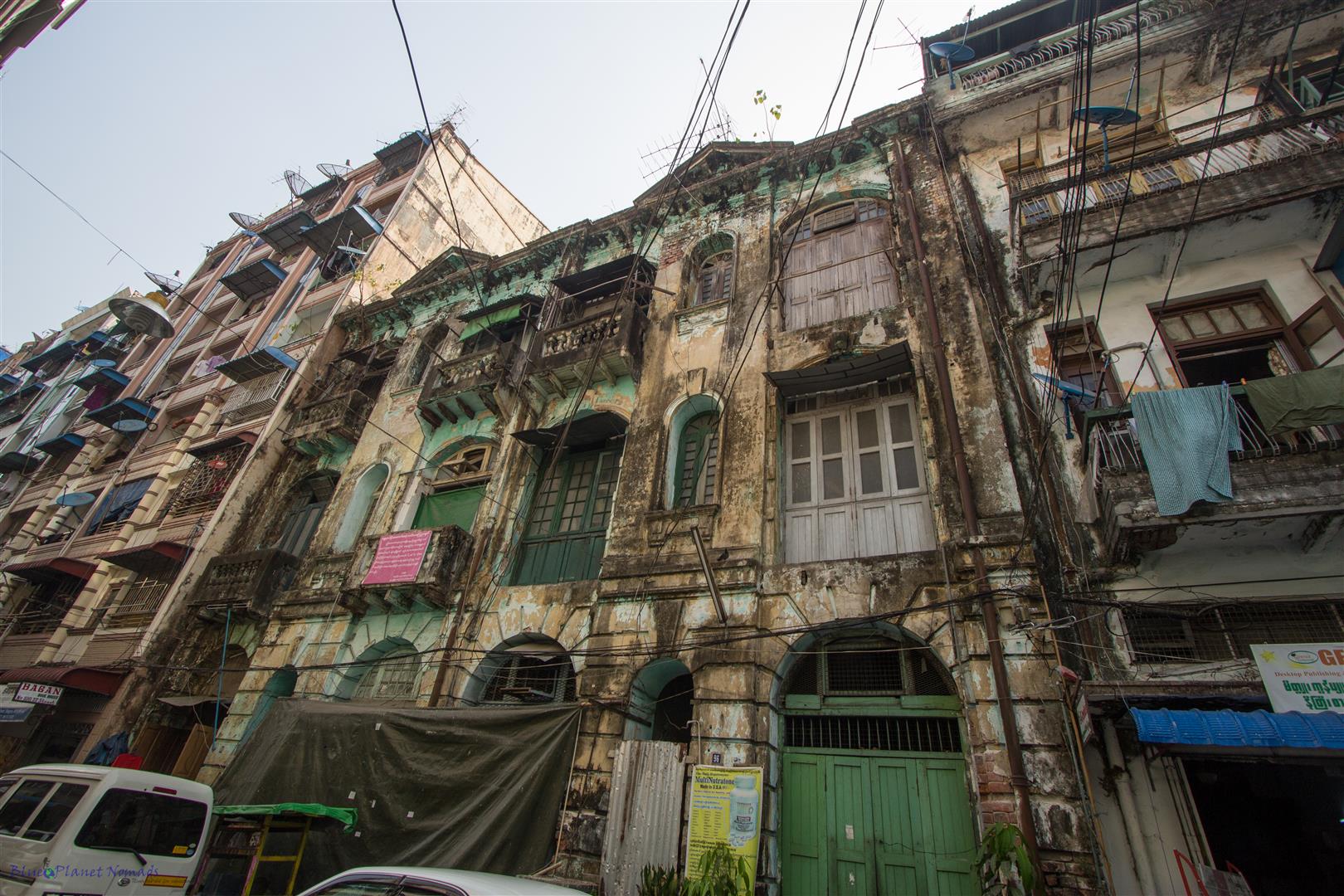
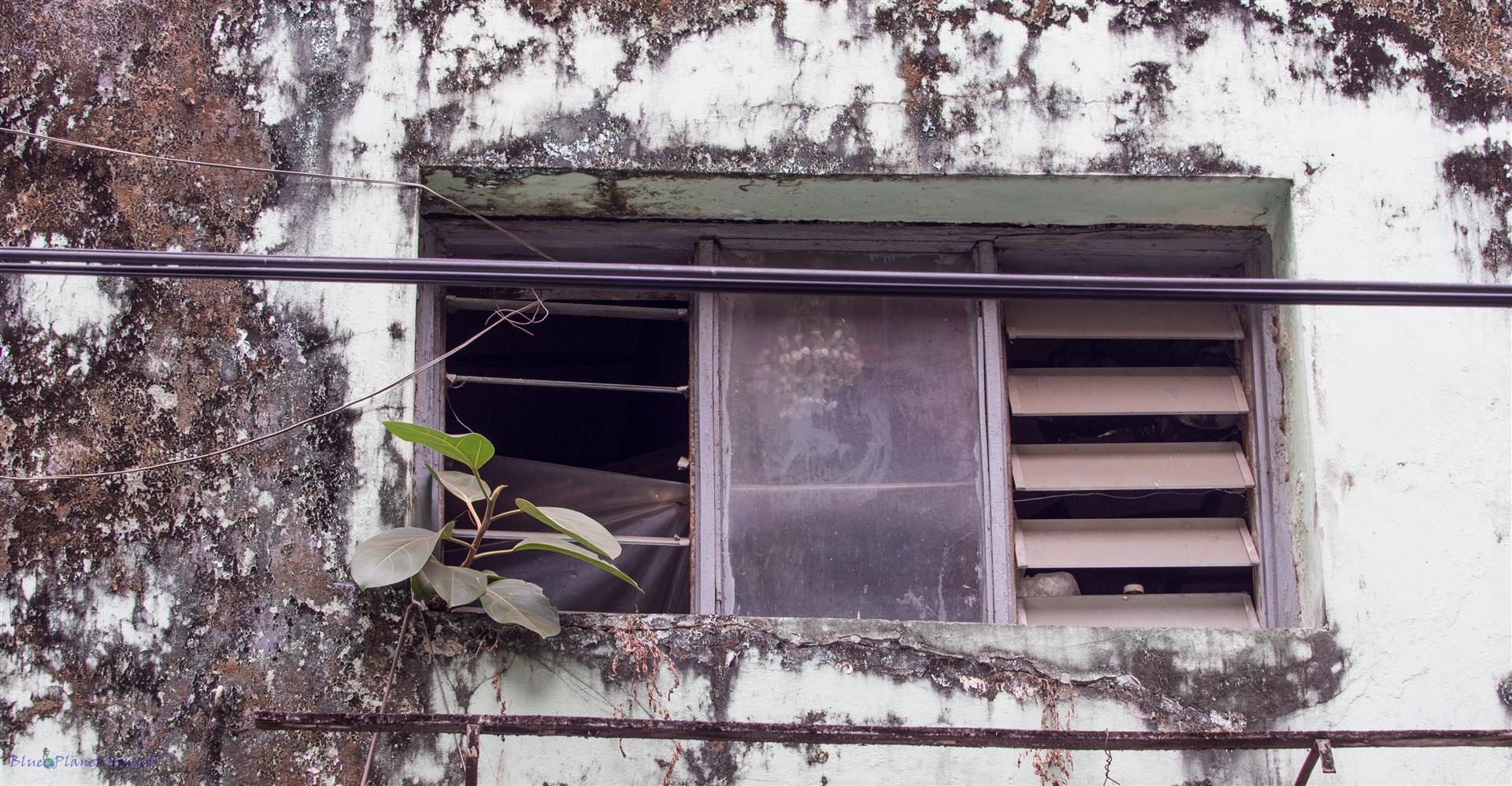
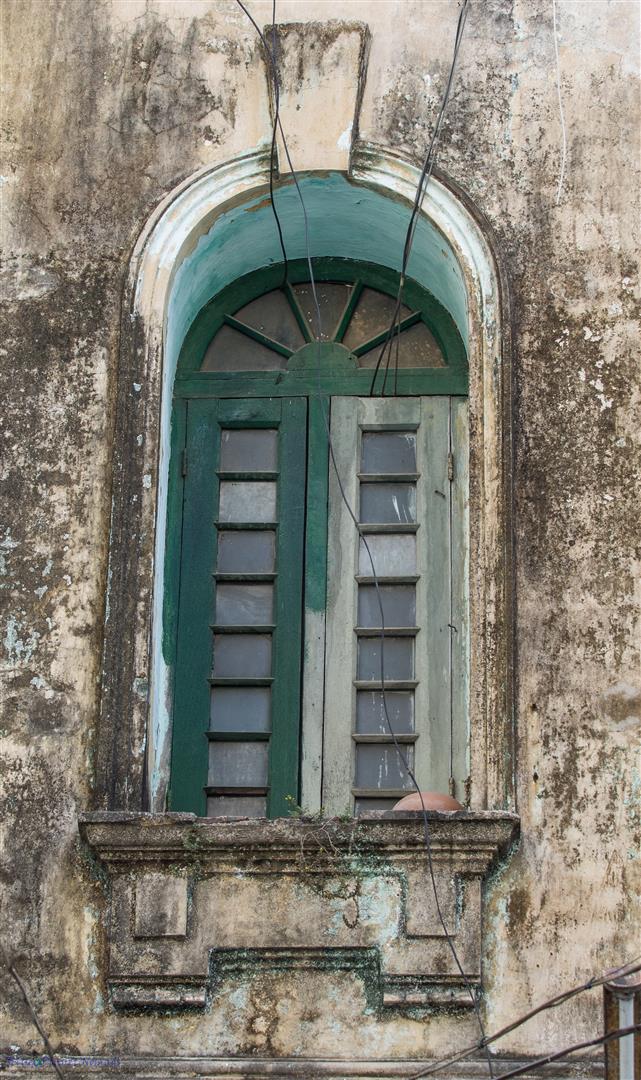
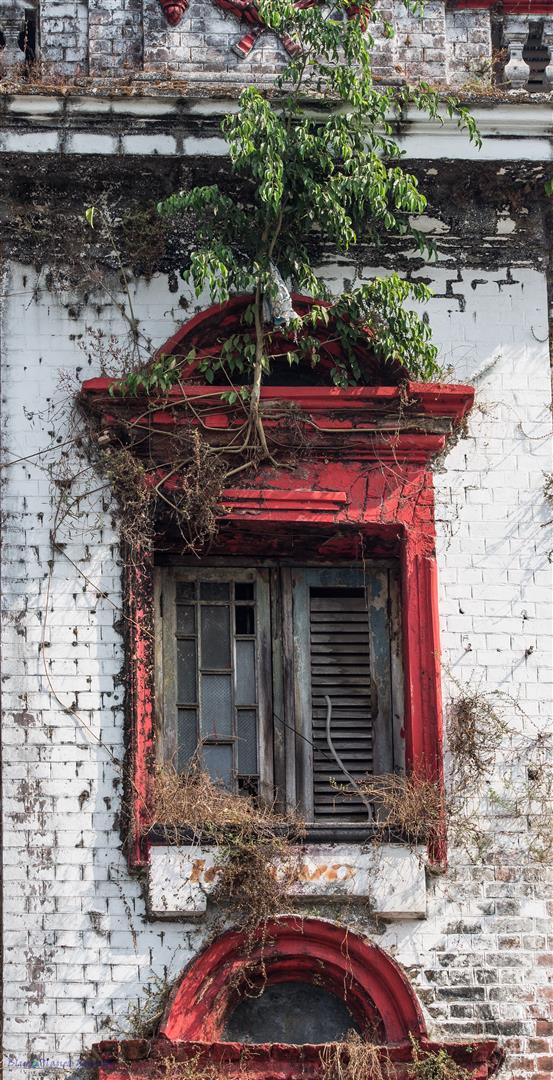
Back on Mahabandoola Road where we started in the morning we passed the Central Telegraph Office which back in the 1950’s had some 200,000 international cables passing through it!
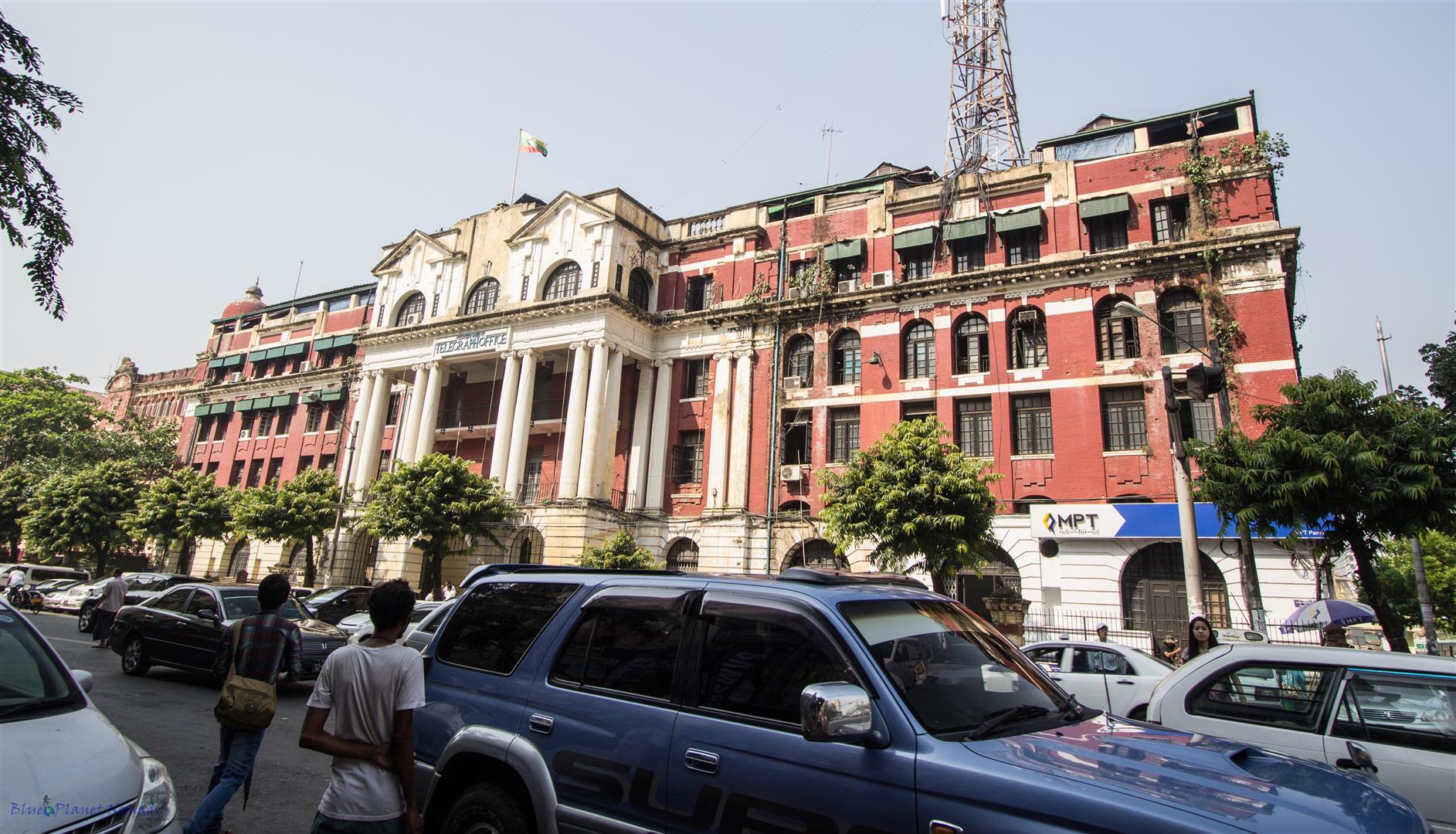
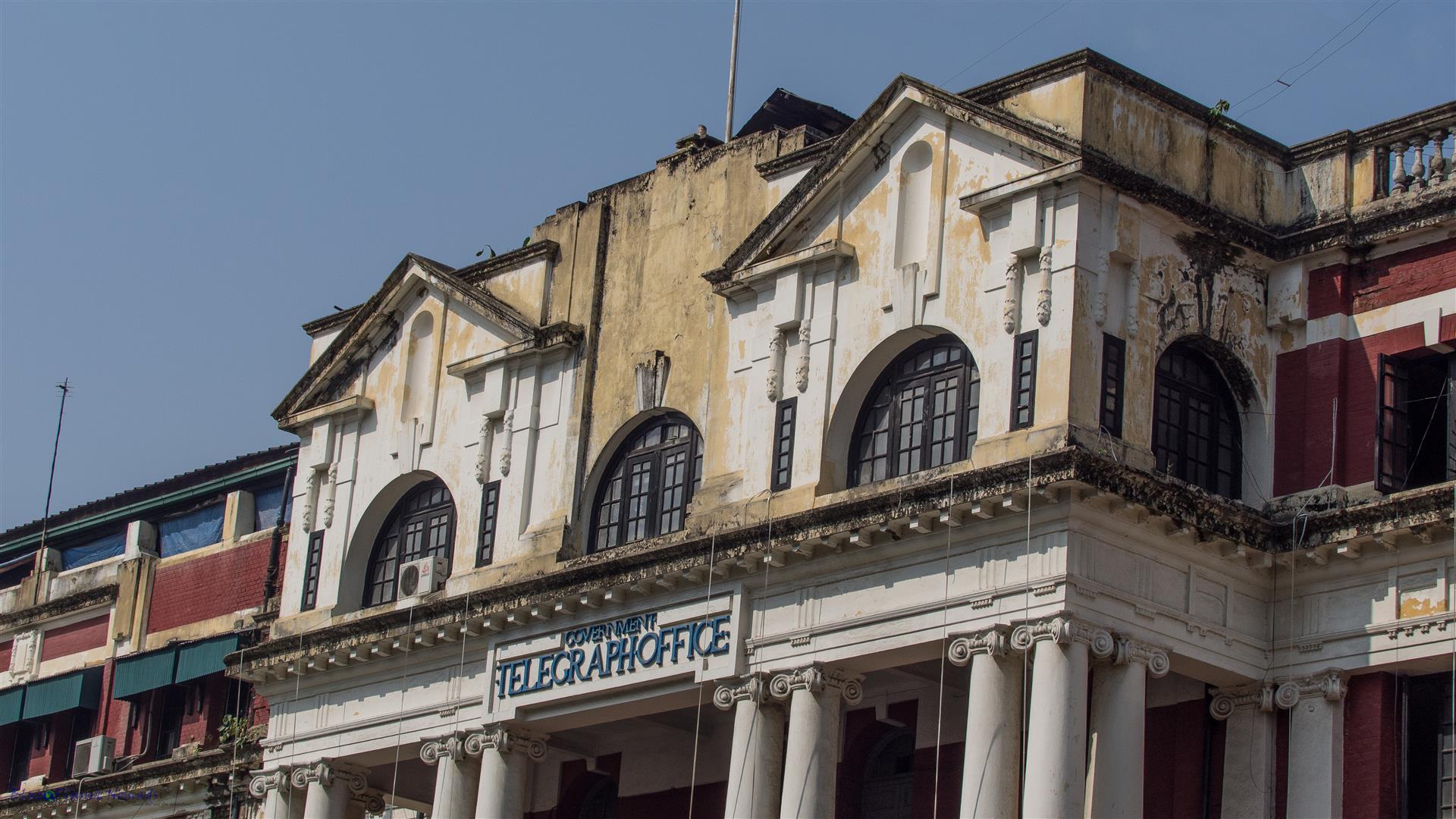
Past Sule Paya and tucked away in side streets are a couple of Mosques, one Shiah and the other Sunni. Although Myanmar is largely a Buddhist country, other religions are practised although they are a minority. The mosques mark the end of the tour in the guidebook, well the Golden Tea House does except it was closed, we didn’t seem to be having much luck with tea houses! So we stopped by a very nice bakery instead for some milkshakes and cake.
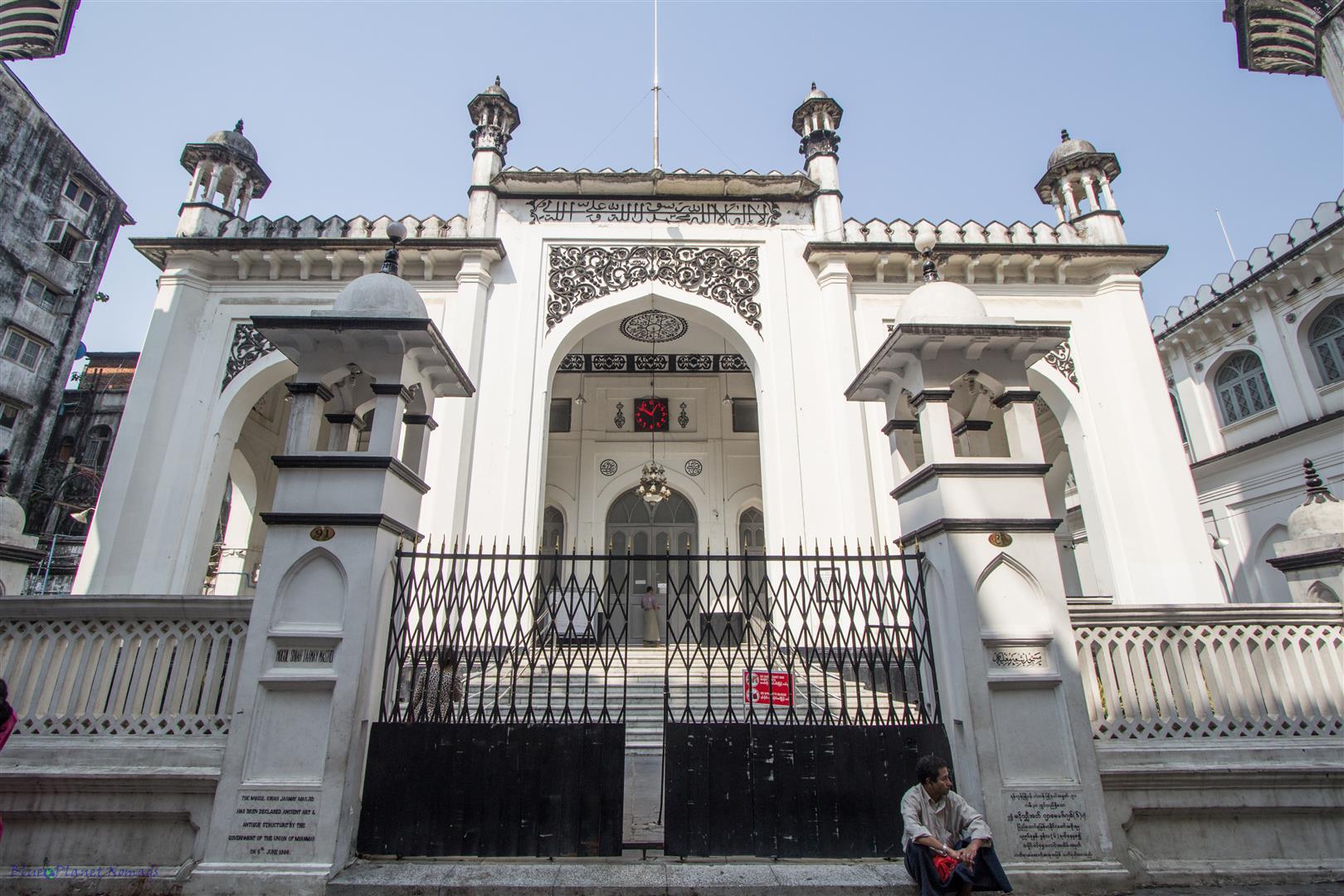
We didn’t end our tour here, we had plenty of time before meeting up with friends for lunch so took our time getting back to the guesthouse and continued to enjoy Yangon’s architectural treasures along the way. We also took the time to focus on the street life, the sites and smells of street food and the little tea shops, a typical scene from South East Asia.
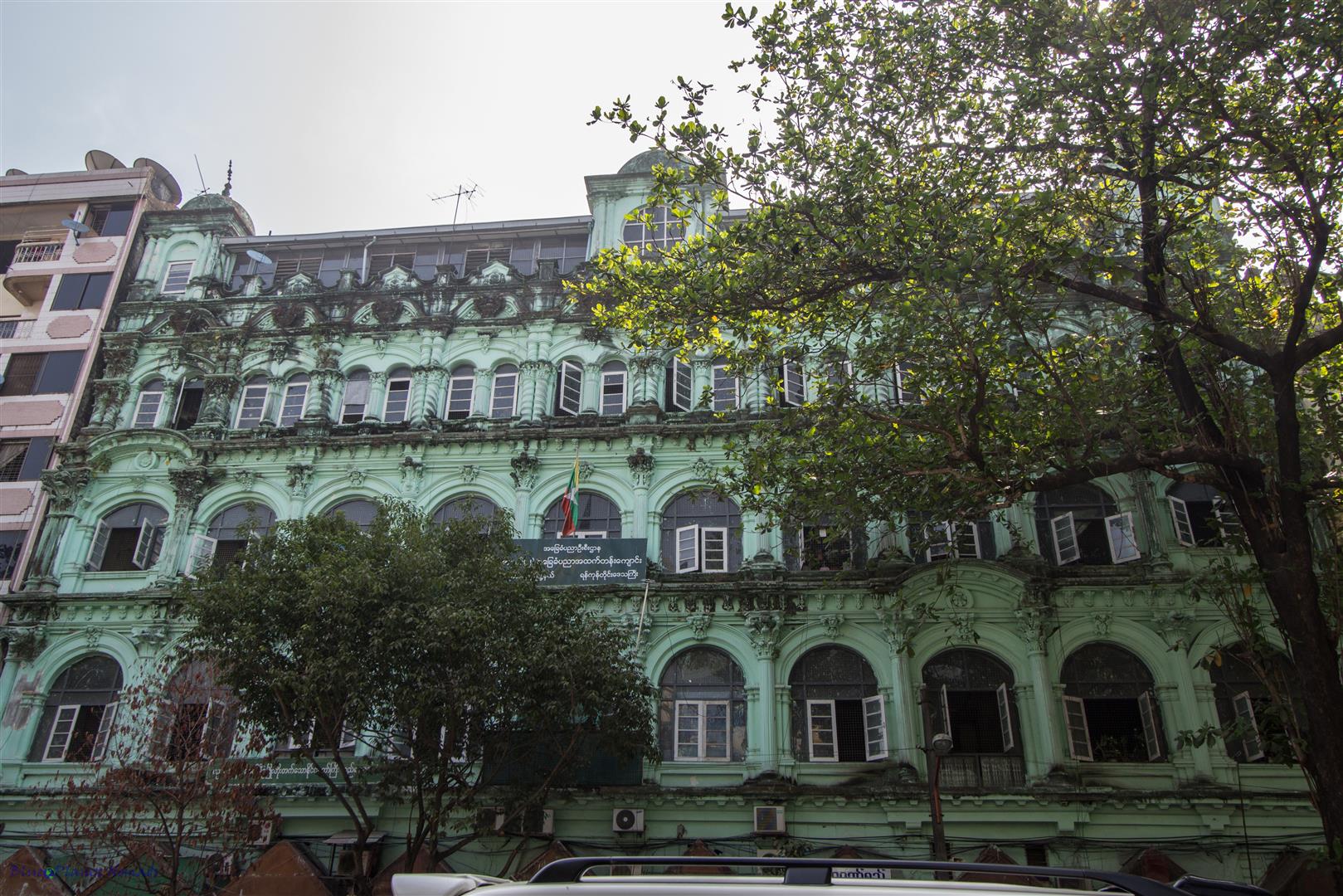
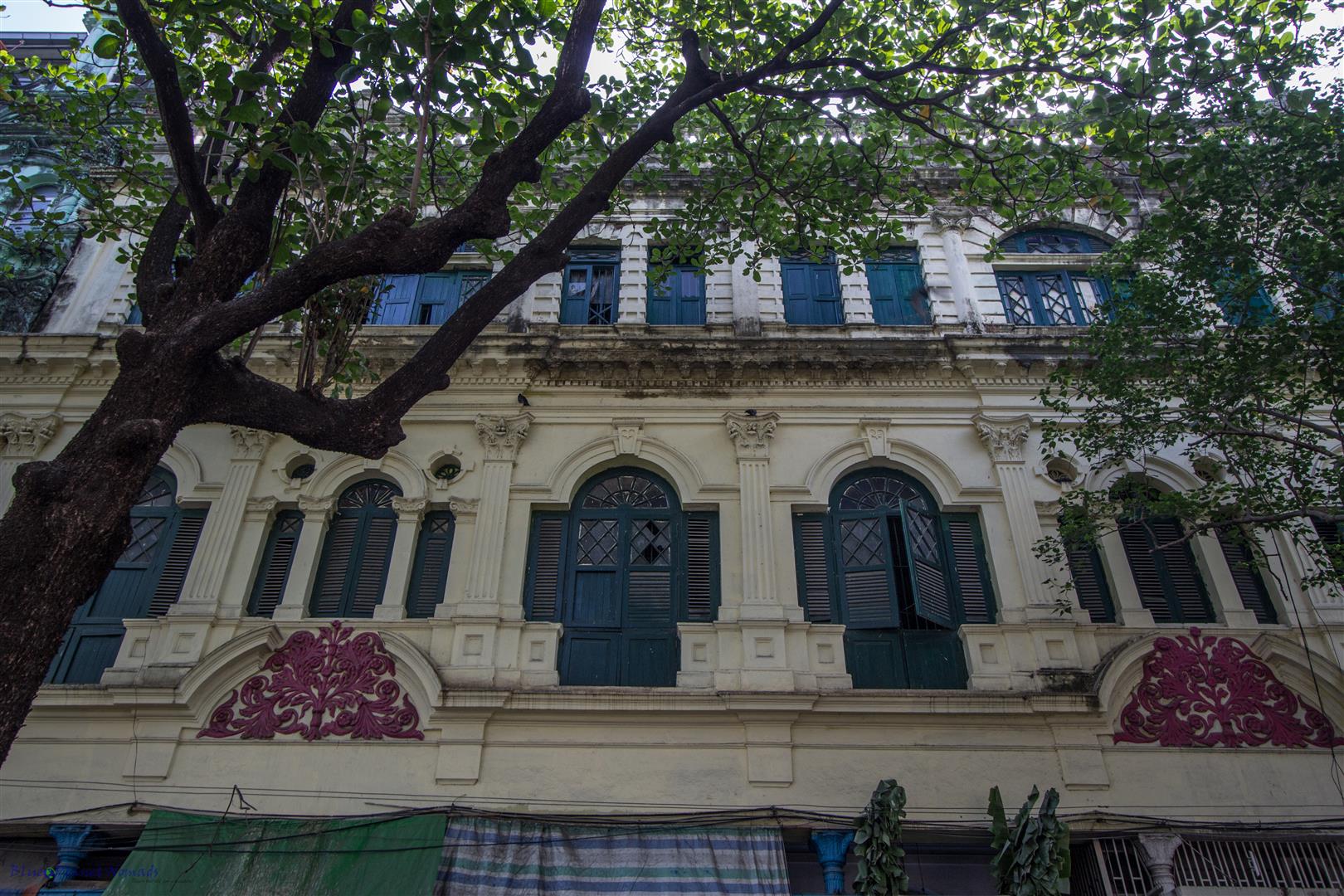
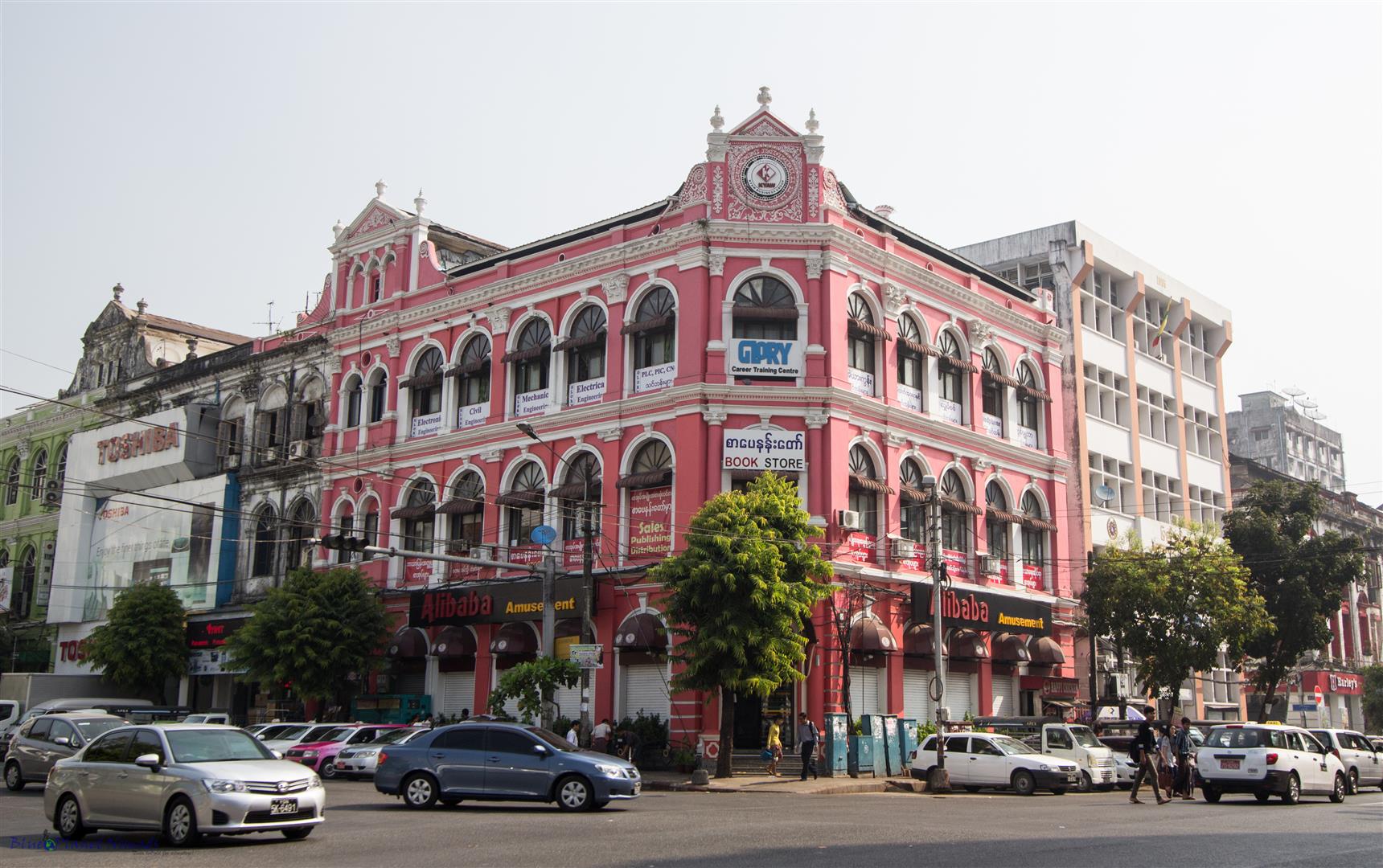
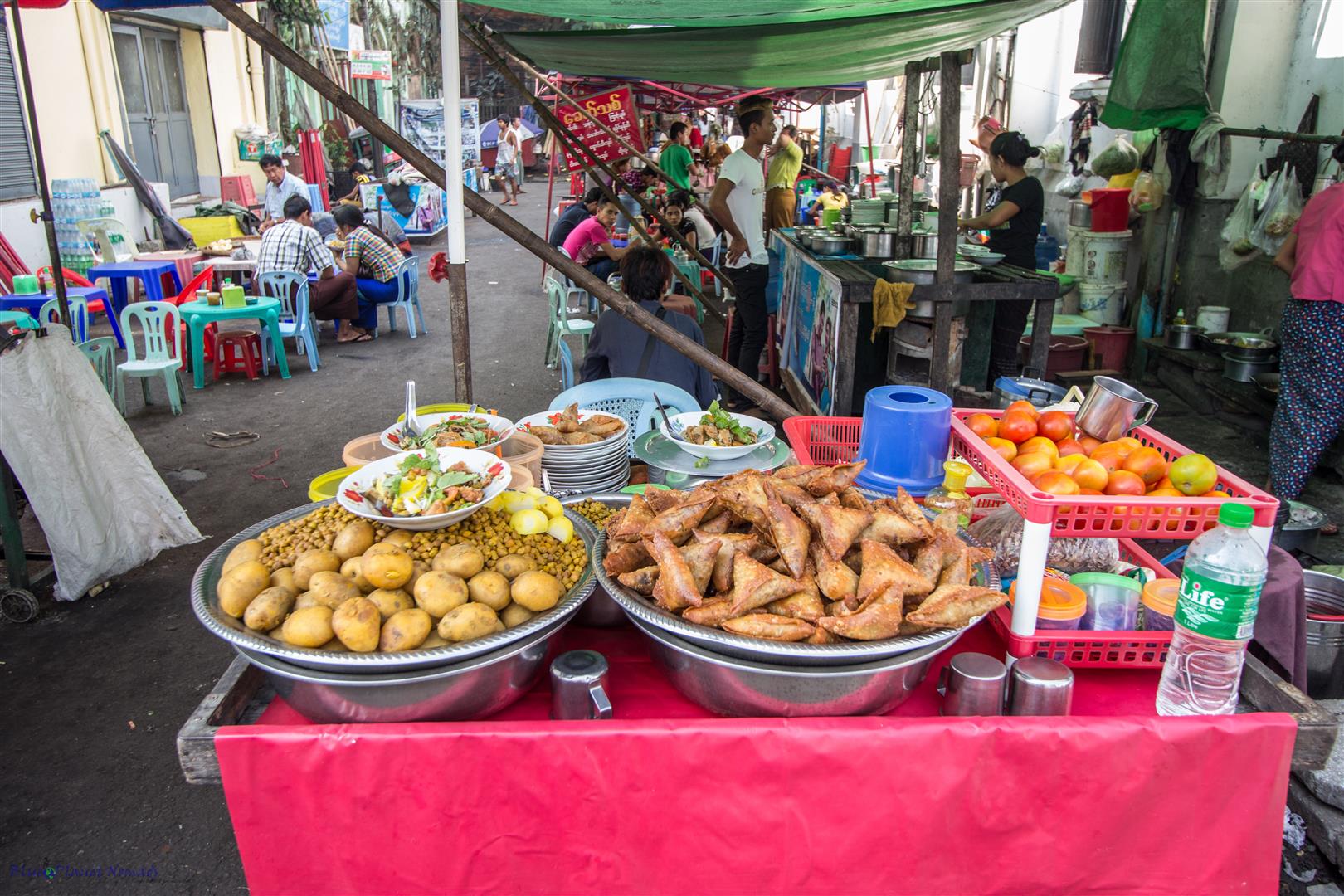
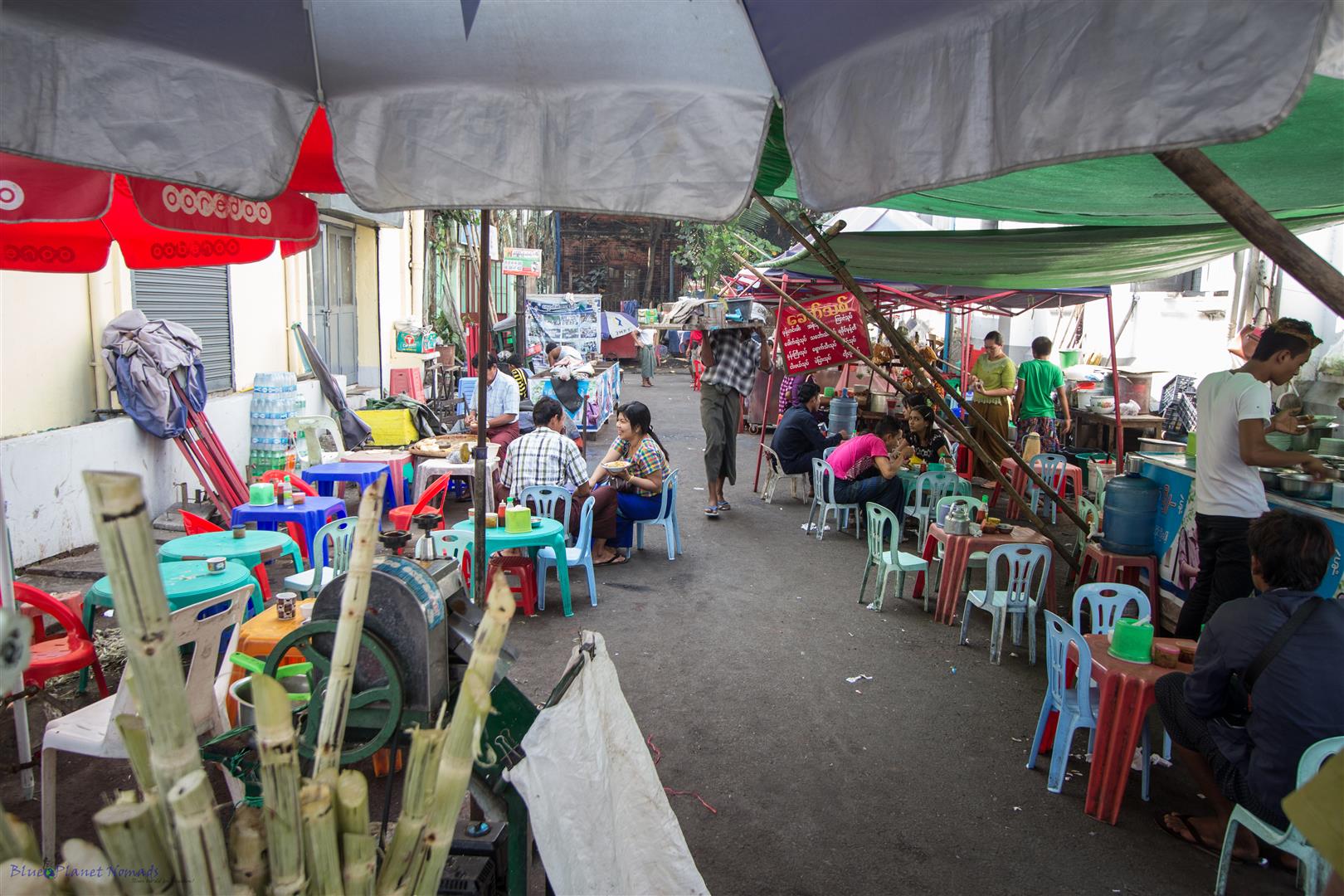
Visted: March 2016
If you have enjoyed the photos and would like to see more! then the complete gallery can be viewed in the Trip Photos

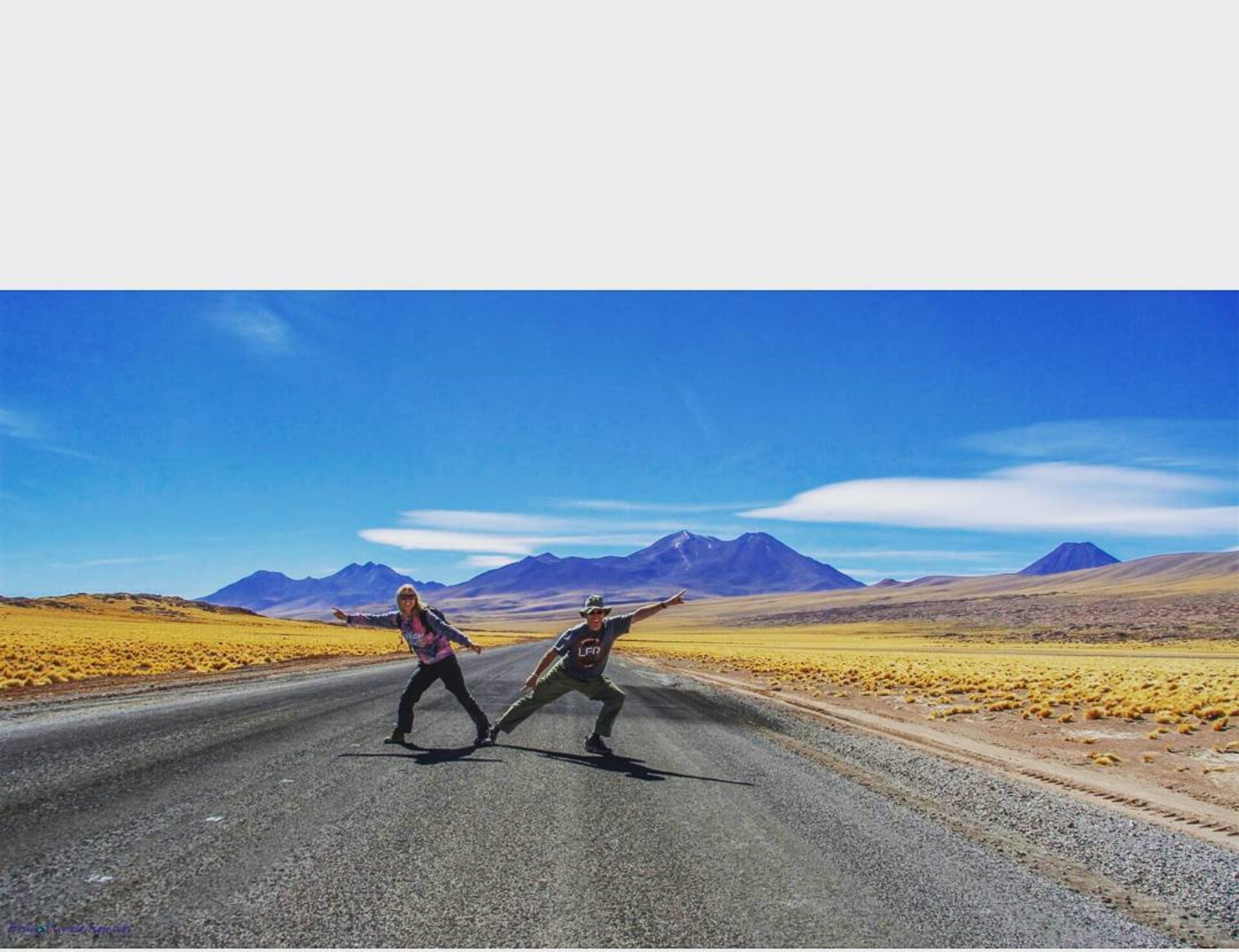
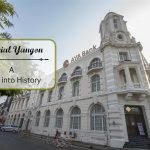
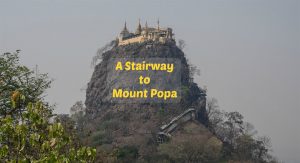
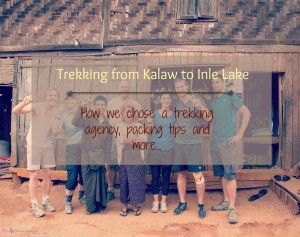

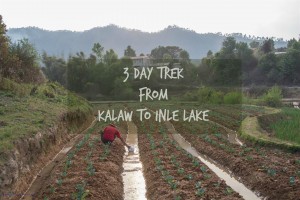
Thanks for posting this! I’m planning to visit Myanmar in a few months. I may contact you with questions!
I would be very happy to answer any questions you have. Keep an eye out for more postings.. there are more to come yet 🙂
Such incredible architecture. I love the City Hall. The Independence Monument looks unique and I like the colors in the market.
Thanks Rebecca 🙂 I would love to have gone back in time to Colonial days when there were even more buildings! I can only imagine what the city would have looked like then. But yes a walk around Yangon to admire its old colonial architecture is something not to be missed 🙂